#4 October 1915
Text



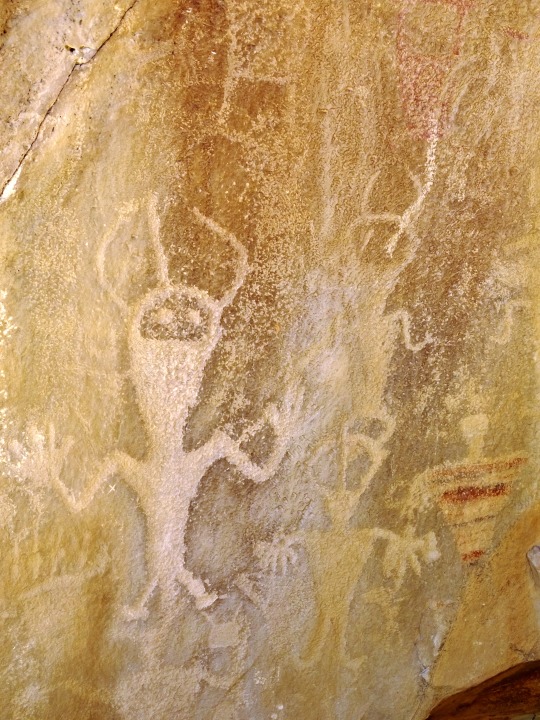












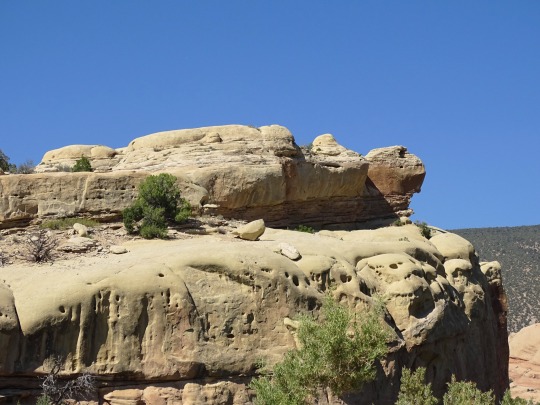
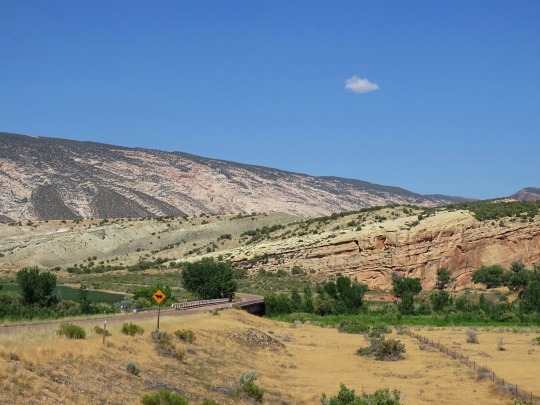





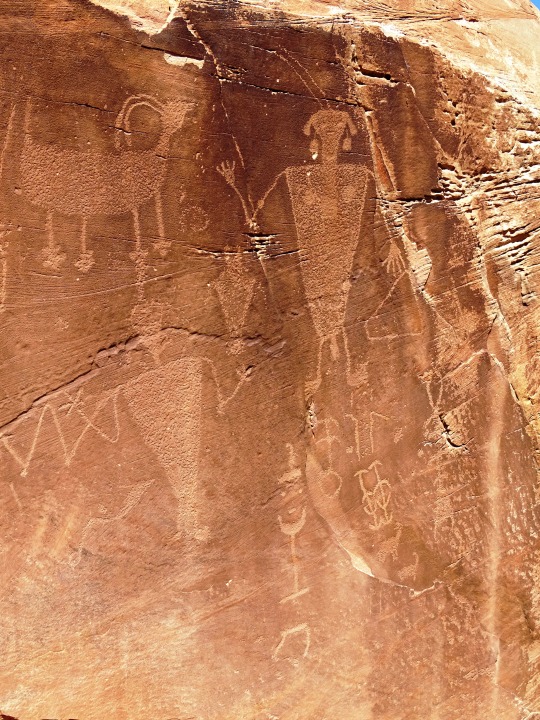


The Dinosaur National Monument was declared a national monument on October 4, 1915.
#Dinosaur National Monument#national monument#4 October 1915#travel#anniversary#US history#original photography#summer 2022#vacation#Uintah County#Utah#landscape#countryside#tourist attraction#landmark#Morrison Formation#Green River#petroglyphs#Native American history#Turtle Rock#geology#bush#flora
18 notes
·
View notes
Text
Science, Religion Mixing? Or No?
Science vs Religion? Science with Religion? Science without Religion? Religion without Science? Or simply a cuddle muddle of numerous variations?
View On WordPress
#1915#1919#20 July 1969#4 October 1957#6th century#7th century BC#8th century BC#Abbasid Caliphate#Abbasids#Africa#Albert Einstein#Albertus Magnus#Apollo Lunar Module#Arthur Eddington#Astrology#Babylonians#Baghdad#Catholic#Catholic Church#China#Chinese#Christianity#Copernicus#Descartes#Eagle#Early Modern Period#Galileo#Geo-Heliocentric#Gersonides#Greek
1 note
·
View note
Text
United States Patent and Trademark Office
0462795 – July 16, 1891 – Method Of Producing Rain-Fall
803180 – October 31, 1905 – Means for Producing High Potential Electrical Discharges
1103490 – August 6, 1913 – Rain-Maker
1225521 – September 4, 1915 – Protecting From Poisonous Gas In Warfare
1279823 – September 24, 1918 – Process and Apparatus for Causing Precipitation by Coalescence of Aqueous Particles Contained in the Atmosphere
1284982 – November 19, 1918 – Process and Apparatus for Procuring and Stimulating Rainfall
1338343 – April 27, 1920 – Process And Apparatus For The Production of Intense Artificial Clouds, Fogs, or Mists
1358084 – November 9, 1920 – Method of Producing Fog-Screens
1619183 – March 1, 1927 – Process of Producing Smoke Clouds From Moving Aircraft
1665267 – April 10, 1928 – Process of Producing Artificial Fogs
1892132 – December 27, 1932 – Atomizing Attachment For Airplane Engine Exhausts
1895765 – January 31, 1933 – Artificial Production of Fog
1928963 – October 3, 1933 – Electrical System And Method
1957075 – May 1, 1934 – Airplane Spray Equipment
1993316 – March 5, 1935 – Apparatus for and Method of Producing Oil Fog
2052626 – September 1, 1936 – Method of Dispelling Fog
2097581 – November 2, 1937 – Electric Stream Generator – Referenced in 3990987
2173756 – September 19, 1939 – Process of Producing Fog or Mist by Partial and Flameless Combustion
2352677 – July 4, 1944 – Artificial Fog Production
2476171 – July 18, 1945 – Smoke Screen Generator
2409201 – October 15, 1946 – Smoke Producing Mixture
2480967 – September 6, 1949 – Aerial Discharge Device
2527230 – October 24, 1950 – Method of Crystal Formation and Precipitation
2527231 – October 24, 1950 – Method of Generating Silver Iodide Smoke
2550324 – April 24, 1951 – Process For Controlling Weather
2582678 – June 15, 1952 – Material Disseminating Apparatus For Airplanes
2611992 – September 30, 1952 – Engine Exhaust Operated Fluent Material Distributor
2614083 – October 14, 1952 – Metal Chloride Screening Smoke Mixture
2633455 – March 31, 1953 – Smoke Generator
2688069 – August 31, 1954 – Steam Generator – Referenced in 3990987
2721495 – October 25, 1955 – Method And Apparatus For Detecting Minute Crystal Forming Particles Suspended in a Gaseous Atmosphere
2730402 – January 10, 1956 – Controllable Dispersal Device
2903188 – April 2, 1956 – Control of Tropical Cyclone Formation
2756097 – July 24, 1956 – Process for Weather Control
2801322 – July 30, 1957 – Decomposition Chamber for Monopropellant Fuel – Referenced in 3990987
2835530 – May 20, 1958 – Process for the Condensation of Atmospheric Humidity and Dissolution of Fog
2871344 – January 27, 1959 – Long Distance Communication System
2881335 – April 7, 1959 – Generation of Electrical Fields
2908442 – October 13, 1959 – Method For Dispersing Natural Atmospheric Fogs And Clouds
2962450 – November 29, 1960 – Fog Dispelling Composition
2963975 – December 13, 1960 – Cloud Seeding Carbon Dioxide Bullet
3019989 – February 6, 1962 – Atmospheric Space Charge Modification
2986360 – May 30, 1962 – Aerial Insecticide Dusting Device
3046168 – July 24, 1962 – Chemically Produced Colored Smokes
3056556 – October 2, 1962 – Method of Artificially Influencing the Weather
3126155 – March 24, 1964 – Silver Iodide Cloud Seeding Generator
3127107 – March 31, 1964 – Generation of Ice-Nucleating Crystals
3131131 – April 28, 1964 – Electrostatic Mixing in Microbial Conversions
3140207 – July 7, 1964 – Pyrotechnic Composition
3174150 – March 16, 1965 – Self-Focusing Antenna System
3234357 – February 8, 1966 – Electrically Heated Smoke Producing Device
3274035 – September 20, 1966 – Metallic Composition For Production of Hydroscopic Smoke
3284005 – November 8,1966 – Weather Control by Artificial Means
3300721 – January 24, 1967 – Means For Communication Through a Layer of Ionized Gases
3313487 – April 11, 1967 – Cloud Seeding Apparatus
3338476 – August 29, 1967 – Heating Device For Use With Aerosol Containers
198 notes
·
View notes
Text
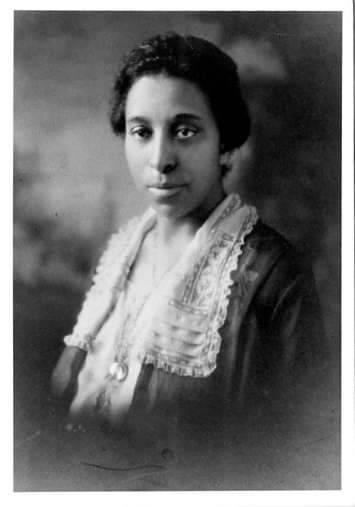
Lucy Diggs Slowe (July 4, 1885 – October 21, 1937) was an American educator and athlete, and the first Black woman to serve as Dean of Women at any American university. She was a founder of Alpha Kappa Alpha sorority, the first sorority founded by African-American women.
Slowe was a tennis champion, winning the national title of the American Tennis Association's first tournament in 1917, the first African-American woman to win a major sports title. In 1922, Slowe was appointed the first Dean of Women at Howard University. She continued in that role for 15 years until her death. In addition, Slowe created and led two professional associations to support college administrators.
Lucy Diggs Slowe was born in Berryville, Virginia to Henry Slowe and Fannie Potter Slowe. While various sources put her birth year as 1885,[3][4] others have said 1883. She was one of seven children. Her father's occupation has been reported as a hotel operator, restaurant proprietor and farmer. He died before Lucy turned one and her mother died shortly after. Following her mother's death, Lucy and her sister Charlotte were raised by her aunt Martha Price in Lexington, Virginia. At thirteen, Lucy and her family moved to Baltimore, Maryland, where she attended the Baltimore Colored High and Training School. She graduated second in her class in 1904, receiving one of the two-sponsored scholarships to Howard from the Baltimore City School Board.
Slowe was the first person from her school to attend Howard University, the top historically black college in the nation, at a time when only 1/3 of 1% of African Americans and 5% of whites of eligible age attended any college.
After graduation in 1908, Slowe returned to Baltimore to teach English in high school. During the summers, she started studying at Columbia University in New York, where she earned her Masters of Arts degree in 1915.
#black tumblr#black history#black literature#black excellence#black community#civil rights#black history is american history#black girl magic
109 notes
·
View notes
Text
What's going on in the Armenian Quarter of Jerusalem? a timeline
Background
700s-1920s: Armenian Christians immigrate to Palestine, at first due to the holy sites there and later (after 1915) fleeing the Armenian genocide. Most of them end up living in a section of Jerusalem known as the Armenian Quarter. An Armenian church / Patriarchate is established that has authority over Armenian Apostolic Christians everywhere.
1923-1947: Britain (who had been given the "mandate," aka direct governmental control, of Palestine by other European colonial powers), empowers Patriarchates in Jerusalem (church leadership) to do things like select their own leaders and sell land without oversight from their communities. This gives Britain more authority and prevents regular Palestinian people from knowing what's going on when it comes to church business including secret real estate deals.
2005-2019: Land in Jerusalem belonging to the Greek Orthodox Patriarchate is sliced up, sold, and developed despite attempts to fight it in Israeli courts.
July 2021: The Armenian Patriarchate makes a deal leasing 2.7 acres of land to real estate / development company Xana Gardens (based in Dubai and owned by Israeli businessman Danny Rothman) for between 49 and 98 years. The deal is made without proper oversight and approval, including from within the Patriarchate.
The land in question includes the historical Cows' Garden (Hadiqa al-Baqar / حديقة البقر), now a parking lot; part of a church school; a garden; and five family houses. It makes up about 1/4 of the total land in the Armenian Quarter. No one knows that more than just Cows' Garden is affected.
Xana Gardens wants to build a luxury hotel on some of this land, including Cow's Garden.
Events in 2023
May: Details of the nature of the real estate deal come out. The government of Jordan (I think? these news reports are written in the passive voice) and Armenian institutions try to contact the Patriarchate to express concern about the handling of historically significant sites. The Patriarch does not respond.
11 May: Jordan and Palestine suspend their recognition of Patriarch Nourhan Manougian.
26 October: The Patriarchate announces that it has contacted Xana Gardens to cancel the deal. Xana Gardens does not respond.
Later on 26 October (around 3pm): Israeli bulldozers arrive at Cows' Garden and start tearing up pavement and demolishing a wall. Armenians rush to stand in front of bulldozers and prevent further destruction.
5 November: Rothman and other representatives of Xana Gardens arrive with 15 settlers and tell local Armenians that the land is theirs and they need to leave. Some of the settlers have guns and leashed dogs. About 200 Armenian Palestinians arrive and force the settlers to stand down.
12 and 13 November: Xana Gardens sends bulldozers to Cows' Garden. They do not have necessary permits. Armenians set up constantly rotating vigils at the Gardens and make barricades with pieces of metal and their cars.
15 November, 4:30pm: Israeli settlers drive a convoy of cars into the Garden. Armenians gather around the barricades. The police back the settlers and arrest three Armenians, including one child.
28th December: 30+ settlers attack a group of Armenian bishops, priests, deacons, and seminary students (including Bishop Koryoun Baghdasaryan, the director of the Patriarchate's real estate department) with sticks and nerve agents / tear gas, injuring several.
28th December, later: The Patriarchate releases a statement attributing the attack to Xana Gardens. The development company does not want the Patriarchate to continue trying to reverse the deal through the court system.
119 notes
·
View notes
Text
WHAT IS THE THEORY OF GENERAL RELATIVITY??
Blog#337
Wednesday, October 4th, 2023
Welcome back,
General relativity is physicist Albert Einstein's understanding of how gravity affects the fabric of space-time.
The theory, which Einstein published in 1915, expanded the theory of special relativity that he had published 10 years earlier. Special relativity argued that space and time are inextricably connected, but that theory didn't acknowledge the existence of gravity.

Einstein spent the decade between the two publications determining that particularly massive objects warp the fabric of space-time, a distortion that manifests as gravity, according to NASA.
To understand general relativity, first, let's start with gravity, the force of attraction that two objects exert on one another. Sir Isaac Newton quantified gravity in the same text in which he formulated his three laws of motion, the "Principia."
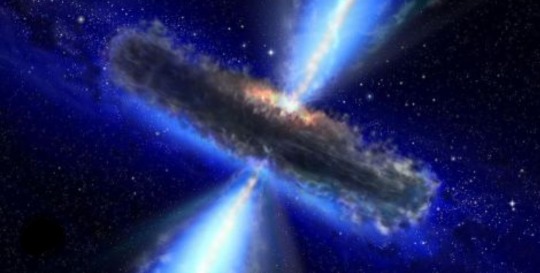
The gravitational force tugging between two bodies depends on how massive each one is and how far apart the two lie, according to NASA Glenn Research Center.
Even as the center of the Earth is pulling you toward it (keeping you firmly lodged on the ground), your center of mass is pulling back at the Earth. But the more massive body barely feels the tug from you, while with your much smaller mass, you find yourself firmly rooted thanks to that same force.

Yet Newton's laws assume that gravity is an innate force of an object that can act over a distance.
Albert Einstein, in his theory of special relativity, determined that the laws of physics are the same for all non-accelerating observers, and he showed that the speed of light within a vacuum is the same no matter the speed at which an observer travels, according to Wired.
As a result, he found that space and time were interwoven into a single continuum known as space-time.

And events that occur at the same time for one observer could occur at different times for another.
As he worked out the equations for his general theory of relativity, Einstein realized that massive objects caused a distortion in space-time. Imagine setting a large object in the center of a trampoline.

The object would press down into the fabric, causing it to dimple. If you then attempt to roll a marble around the edge of the trampoline, the marble would spiral inward toward the body, pulled in much the same way that the gravity of a planet pulls at rocks in space.
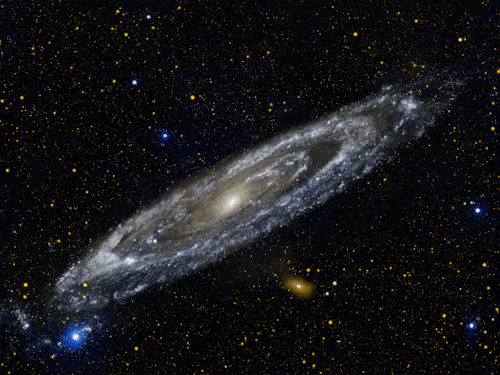
In the decades since Einstein published his theories, scientists have observed countless of phenomena matching the predictions of relativity.
We asked Elena Giorgi, an assistant professor of mathematics at Columbia University a few commonly asked questions about general relativity.
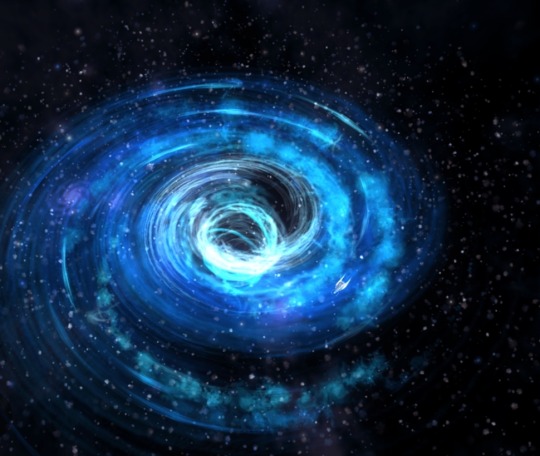
What is general relativity?
General relativity is a physical theory about space and time and it has a beautiful mathematical description. According to general relativity, the spacetime is a 4-dimensional object that has to obey an equation, called the Einstein equation, which explains how the matter curves the spacetime.
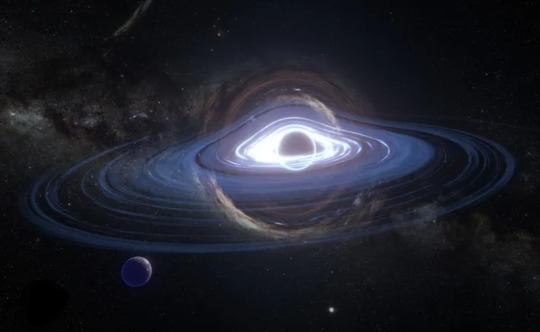
What force is explained by general relativity?
General relativity explains gravity, and in this theory, it is not really a "force" anymore. The gravitational field comes out of the description of general relativity as a result of the curved spacetime.
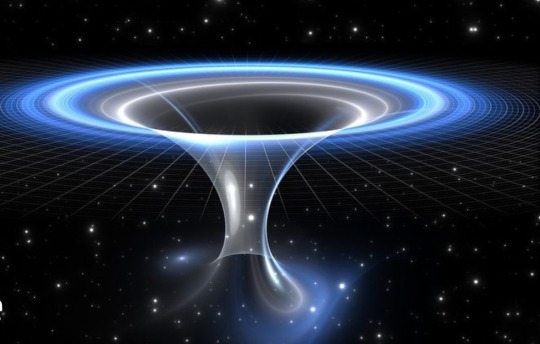
When was the theory of general relativity established?
General Relativity was established in 1915 by Albert Einstein and the first solutions to the Einstein equation were found already in early 1916.

Is general relativity proven?
General relativity has passed all the experimental tests so far, but its applicability is expected to break down when [the] effects of quantum mechanics (the theory of the very small particles) should become dominant
Originally published on www.space.com
COMING UP!!
(Saturday, October 7th, 2023)
"CAN WE LAND ON JUPITER??"
#astronomy#outer space#alternate universe#astrophysics#universe#spacecraft#white universe#parallel universe#astrophotography#space#cosmology#cosmos#big bang comics#constellations
129 notes
·
View notes
Text
Lista dei brevetti per la modifica del clima.
Dal 1891 al 2023.
United States Patent and Trademark Office.
...
0462795 – July 16, 1891 – Method Of Producing Rain-Fall
803180 – October 31, 1905 – Means for Producing High Potential Electrical Discharges
1103490 – August 6, 1913 – Rain-Maker
1225521 – September 4, 1915 – Protecting From Poisonous Gas In Warfare
1279823 – September 24, 1918 – Process and Apparatus for Causing Precipitation by Coalescence of Aqueous Particles Contained in the Atmosphere
1284982 – November 19, 1918 – Process and Apparatus for Procuring and Stimulating Rainfall
1338343 – April 27, 1920 – Process And Apparatus For The Production of Intense Artificial Clouds, Fogs, or Mists
1358084 – November 9, 1920 – Method of Producing Fog-Screens
1619183 – March 1, 1927 – Process of Producing Smoke Clouds From Moving Aircraft
1665267 – April 10, 1928 – Process of Producing Artificial Fogs
1892132 – December 27, 1932 – Atomizing Attachment For Airplane Engine Exhausts
1895765 – January 31, 1933 – Artificial Production of Fog
1928963 – October 3, 1933 – Electrical System And Method
1957075 – May 1, 1934 – Airplane Spray Equipment
1993316 – March 5, 1935 – Apparatus for and Method of Producing Oil Fog
2052626 – September 1, 1936 – Method of Dispelling Fog
2097581 – November 2, 1937 – Electric Stream Generator – Referenced in 3990987
2173756 – September 19, 1939 – Process of Producing Fog or Mist by Partial and Flameless Combustion
2352677 – July 4, 1944 – Artificial Fog Production
2476171 – July 18, 1945 – Smoke Screen Generator
2409201 – October 15, 1946 – Smoke Producing Mixture
2480967 – September 6, 1949 – Aerial Discharge Device
2527230 – October 24, 1950 – Method of Crystal Formation and Precipitation
2527231 – October 24, 1950 – Method of Generating Silver Iodide Smoke
2550324 – April 24, 1951 – Process For Controlling Weather
2582678 – June 15, 1952 – Material Disseminating Apparatus For Airplanes
2611992 – September 30, 1952 – Engine Exhaust Operated Fluent Material Distributor
2614083 – October 14, 1952 – Metal Chloride Screening Smoke Mixture
2633455 – March 31, 1953 – Smoke Generator
2688069 – August 31, 1954 – Steam Generator – Referenced in 3990987
2721495 – October 25, 1955 – Method And Apparatus For Detecting Minute Crystal Forming Particles Suspended in a Gaseous Atmosphere
2730402 – January 10, 1956 – Controllable Dispersal Device
2903188 – April 2, 1956 – Control of Tropical Cyclone Formation
2756097 – July 24, 1956 – Process for Weather Control
2801322 – July 30, 1957 – Decomposition Chamber for Monopropellant Fuel – Referenced in 3990987
2835530 – May 20, 1958 – Process for the Condensation of Atmospheric Humidity and Dissolution of Fog
2871344 – January 27, 1959 – Long Distance Communication System
2881335 – April 7, 1959 – Generation of Electrical Fields
2908442 – October 13, 1959 – Method For Dispersing Natural Atmospheric Fogs And Clouds
2962450 – November 29, 1960 – Fog Dispelling Composition
2963975 – December 13, 1960 – Cloud Seeding Carbon Dioxide Bullet
3019989 – February 6, 1962 – Atmospheric Space Charge Modification
2986360 – May 30, 1962 – Aerial Insecticide Dusting Device
3046168 – July 24, 1962 – Chemically Produced Colored Smokes
3056556 – October 2, 1962 – Method of Artificially Influencing the Weather
3126155 – March 24, 1964 – Silver Iodide Cloud Seeding Generator
3127107 – March 31, 1964 – Generation of Ice-Nucleating Crystals
3131131 – April 28, 1964 – Electrostatic Mixing in Microbial Conversions
3140207 – July 7, 1964 – Pyrotechnic Composition
3174150 – March 16, 1965 – Self-Focusing Antenna System
3234357 – February 8, 1966 – Electrically Heated Smoke Producing Device
3274035 – September 20, 1966 – Metallic Composition For Production of Hydroscopic Smoke
3284005 – November 8,1966 – Weather Control by Artificial Means
3300721 – January 24, 1967 – Means For Communication Through a Layer of Ionized Gases
3313487 – April 11, 1967 – Cloud Seeding Apparatus
3338476 – August 29, 1967 – Heating Device For Use With Aerosol Containers
3375148 – March 26, 1968 – Pyrotechnics Comprising Silver Iodate, Ammonium Nitrate, Nitrocellulose and Nitrate Esters
3378201 – April 16, 1968 – Method for Precipitating Atmospheric Water Masses
3410489 – November 12, 1968 – Automatically Adjustable Airfoil Spray System With Pump
3418184 – December 24, 1968 – Smoke Producing Propellant
3429507 – February 25, 1969 – Rainmaker
3432208 – November 7, 1967 – Fluidized Particle Dispenser
3441214 – April 29, 1969 – Method And Apparatus For Seeding Clouds
3445844 – May 20, 1969 – Trapped Electromagnetic Radiation Communications System
3456880 – July 22, 1969 – Method Of Producing Precipitation From The Atmosphere
3518670 – June 30, 1970 – Artificial Ion Cloud
3517512 – June 30, 1970 – Apparatus for Suppressing Contrails
3534906 – October 20, 1970 – Control of Atmospheric Particles
3545677 – December 8, 1970 – Method of Cloud Seeding
3564253 – February 16, 1971 – System And Method For Irradiation Of Planet Surface Areas
3587966 – June 28, 1971 – Freezing Nucleation
3595477 – July 27, 1971 – Fog Dispersing Method and Compositions
3601312 – August 24, 1971 – Methods of Increasing The Likelihood oF Precipitation By The Artificial Introduction Of Sea Water Vapor Into The Atmosphere Winward Of An Air Lift Region
3608810 – September 28, 1971 – Methods of Treating Atmospheric Conditions
3608820– September 20, 1971 – Treatment of Atmospheric Conditions by Intermittent Dispensing of Materials Therein
3613992 – October 19, 1971 – Weather Modification Method
3630950 – December 28, 1971 – Combustible Compositions For Generating Aerosols, Particularly Suitable For Cloud Modification And Weather Control And Aerosolization Process
USRE29142 – May 22, 1973 – Combustible compositions for generating aerosols, particularly suitable for cloud modification and weather control and aerosolization process
3659785 – December 8, 1971 – Weather Modification Utilizing Microencapsulated Material
3666176 – March 3, 1972 – Solar Temperature Inversion Device
3677840 – July 18, 1972 – Pyrotechnics Comprising Oxide of Silver For Weather Modification Use
3690552 – September 12, 1972 – Fog Dispersal
3722183 – March 27, 1973 – Device For Clearing Impurities From The Atmosphere
3748278 – July 24, 1973 – Process and Agents Having an Influence on the Weather
3751913 – August 14, 1973 – Barium Release System
3769107 – October 30, 1973 – Pyrotechnic Composition For Generating Lead Based Smoke
3784099 – January 8, 1974 – Air Pollution Control Method
3785557 – January 15, 1974 – Cloud Seeding System
3788543 – January 29, 1974 – Uniform Size Particle Generator
3795626 – March 5, 1974 – Weather Modification Process
3802971 – April 9, 1974 – Pyrotechnic Formulations for Weather Modification Comprising a Mixture of Iodates
3808595 – April 30, 1974 – Chaff Dispensing System
3813875 – June 4, 1974 – Rocket Having Barium Release System to Create Ion Clouds In The Upper Atmosphere
3835059 – September 10, 1974 – Methods of Generating Ice Nuclei Smoke Particles For Weather Modification And Apparatus Therefore
3835293 – September 10, 1974 – Electrical Heating Apparatus For Generating Super Heated Vapors
3858805 – January 7, 1975 – Ice Nucleation by Micas
3877642 – April 15, 1975 – Freezing Nucleant
3882393 – May 6, 1975 – Communications System Utilizing Modulation of The Characteristic Polarization of The Ionosphere
3887580 – June 3, 1975 – Method of Crystallization of Water in Supercooled Clouds and Fogs and Reagent Useful in Said Method
3896993 – July 29, 1975 – Process For Local Modification of Fog And Clouds For Triggering Their Precipitation And For Hindering The Development of Hail Producing Clouds
3899129 – August 12, 1975 – Apparatus for generating ice nuclei smoke particles for weather modification
3899144 – August 12, 1975 – Powder contrail generation
3915379 – October 28, 1975 – Method of Controlling Weather
3940059 – February 24, 1976 – Method For Fog Dispersion
3940060 – February 24, 1976 – Vortex Ring Generator
3990987 – November 9, 1976 – Smoke generator
3992628 – November 16, 1976 – Countermeasure system for laser radiation
3994437 – November 30, 1976 – Broadcast dissemination of trace quantities of biologically active chemicals
4042196 – August 16, 1977 – Method and apparatus for triggering a substantial change in earth characteristics and measuring earth changes
RE29,142 – February 22, 1977 – Combustible compositions for generating aerosols, particularly suitable for cloud modification and weather control and aerosolization process
4009828 – March 1 1977 – Organic Nucleating Agent for both Warm and Cold Clouds
4035726 – July 12, 1977 – Method of controlling and/or improving high-latitude and other communications or radio wave surveillance systems by partial control of radio wave et al
4096005 – June 20, 1978 – Pyrotechnic Cloud Seeding Composition
4129252 – December 12, 1978 – Method and apparatus for production of seeding materials
4141274 – February 27, 1979 – Weather modification automatic cartridge dispenser
4167008 – September 4, 1979 – Fluid bed chaff dispenser
4347284 – August 31, 1982 – White cover sheet material capable of reflecting ultraviolet rays
4362271 – December 7, 1982 – Procedure for the artificial modification of atmospheric precipitation as well as compounds with a dimethyl sulfoxide base for use in carrying out said procedure
4373391 – February 15, 1983 – Relative Humidity Sensitive Material
4396152 – August 2, 1983 – Aerosol Dispenser System
4402480 – September 6, 1983 – Atmosphere modification satellite
4412654 – November 1, 1983 – Laminar microjet atomizer and method of aerial spraying of liquids
4415265 – November 15, 1983 – Method and apparatus for aerosol particle absorption spectroscopy
4470544 – September 11, 1984 – Method of and Means for weather modification
4475927 – October 9, 1984 – Bipolar Fog Abatement System
4600147 – July 15, 1986 – Liquid propane generator for cloud seeding apparatus
4633714 – January 6, 1987 – Aerosol particle charge and size analyzer
4643355 – February 17, 1987 – Method and apparatus for modification of climatic conditions
4653690 – March 31, 1987 – Method of producing cumulus clouds
4684063 – August 4, 1987 – Particulates generation and removal
4686605 – August 11, 1987 – HAARP Patent / EASTLUND PATENT – Method and apparatus for altering a region in the earth’s atmosphere, ionosphere, and/or magnetosphere
4704942 – November 10, 1987 – Charged Aerosol
4712155 – December 8, 1987 – Method and apparatus for creating an artificial electron cyclotron heating region of plasma
4742958 – May 10, 1988 – Method for Making Artificial Snow
4744919 – May 17, 1988 – Method of dispersing particulate aerosol tracer
4766725 – August 30, 1988 – Method of suppressing formation of contrails and solution therefor
4829838 – May 16, 1989 – Method and apparatus for the measurement of the size of particles entrained in a gas
4836086 – June 6, 1989 – Apparatus and method for the mixing and diffusion of warm and cold air for dissolving fog
4873928 – October 17, 1989 – Nuclear-sized explosions without radiation
4948257 – August 14, 1990 – Laser optical measuring device and method for stabilizing fringe pattern spacing
1338343– August 14, 1990 – Process and Apparatus for the production of intense artificial Fog
4999637 – March 12, 1991 – Creation of artificial ionization clouds above the earth
5003186 – March 26, 1991 – Stratospheric Welsbach seeding for reduction of global warming
5005355 – April 9, 1991 – Method of suppressing formation of contrails and solution therefor
5038664 – August 13, 1991 – Method for producing a shell of relativistic particles at an altitude above the earths surface
5041760 – August 20, 1991 – Method and apparatus for generating and utilizing a compound plasma configuration
5041834 – August 20, 1991 – Artificial ionospheric mirror composed of a plasma layer which can be tilted
5056357 – October 15, 1991- Acoustic method for measuring properties of a mobile medium
5059909 – October 22, 1991 – Determination of particle size and electrical charge
5104069 – April 14, 1992 – Apparatus and method for ejecting matter from an aircraft
5110502 – May 5, 1992 – Method of suppressing formation of contrails and solution therefor
5156802 – October 20, 1992 – Inspection of fuel particles with acoustics
5174498 – December 29, 1992 – Cloud Seeding
5148173 – September 15, 1992 – Millimeter wave screening cloud and method
5242820 – September 7, 1993 – Army Mycoplasma Patent Patent
5245290 – September 14, 1993 – Device for determining the size and charge of colloidal particles by measuring electroacoustic effect
5286979 – February 15, 1994 – Process for absorbing ultraviolet radiation using dispersed melanin
5296910 – March 22, 1994 – Method and apparatus for particle analysis
5327222 – July 5, 1994 – Displacement information detecting apparatus
5357865 – October 25, 1994 – Method of cloud seeding
5360162 – November 1, 1994 – Method and composition for precipitation of atmospheric water
5383024 – January 17, 1995 – Optical wet steam monitor
5425413 – June 20, 1995 – Method to hinder the formation and to break-up overhead atmospheric inversions, enhance ground level air circulation and improve urban air quality
5434667 – July 18, 1995 – Characterization of particles by modulated dynamic light scattering
5436039 – July 25, 1995 – Artificial Snow in an Aggregate Form of Snow Granules
5441200 – August 15, 1995 – Tropical cyclone disruption
5492274 – February 20, 1996 – Method of and Means for Weather Modification
5546183 – August, 13, 1996 – LIDAR Droplet Size Monitor for In-Flight Measurement of Aircraft Engine Exhaust Contrails, Droplets and Aerosols
5556029 – September 17, 1996 – Method of hydrometeor dissipation (clouds)
5628455 – May 13, 1997 – Method and apparatus for modification of supercooled fog
5631414 – May 20, 1997 – Method and device for remote diagnostics of ocean-atmosphere system state
5639441 – June 17, 1997 – Methods for fine particle formation
5762298 – June 9, 1998 – Use of artificial satellites in earth orbits adaptively to modify the effect that solar radiation would otherwise have on earth’s weather
5800481 – September 1, 1998 – Thermal excitation of sensory resonances
5912396 – June 15, 1999 – System and method for remediation of selected atmospheric conditions
5922976 – July 13, 1999 – Method of measuring aerosol particles using automated mobility-classified aerosol detector
5949001 – September 7, 1999 – Method for aerodynamic particle size analysis
5984239 – November 16, 1999 – Weather modification by artificial satellites
6025402 – February 15, 2000 – Chemical composition for effectuating a reduction of visibility obscuration, and a detoxifixation of fumes and chemical fogs in spaces of fire origin
6030506 – February 29, 2000 – Preparation of independently generated highly reactive chemical species
6034073 – March 7, 2000 – Solvent detergent emulsions having antiviral activity
6045089 – April 4, 2000 – Solar-powered airplane
6056203 – May 2, 2000 – Method and apparatus for modifying supercooled clouds
6315213B1 – June 21, 2000 – Method of modifying weather
6110590 – August 29, 2000 – Synthetically spun silk nanofibers and a process for making the same
6263744 – July 24, 2001 – Automated mobility-classified-aerosol detector
6281972 – August 28, 2001 – Method and apparatus for measuring particle-size distribution
20030085296 – November 2, 2001 – Hurricane and tornado control device
6315213 – November 13, 2001 – Method of modifying weather
2002009338 – January 24, 2002 – Influencing Weather Patterns by way of Altering Surface or Subsurface Ocean Water Temperatures
20020008155 – January 24, 2002 – Method and System for Hurricane Control
6382526 – May 7, 2002 – Process and apparatus for the production of nanofibers
6408704 – June 25, 2002 – Aerodynamic particle size analysis method and apparatus
6412416 – July 2, 2002 – Propellant-based aerosol generation devices and method
6520425 – February 18, 2003 – Process and apparatus for the production of nanofibers
6539812 – April 1, 2003 – System for measuring the flow-rate of a gas by means of ultrasound
6553849 – April 29, 2003 – Electrodynamic particle size analyzer
6569393 – May 27, 2003 – Method And Device For Cleaning The Atmosphere
20040060994 – April 1, 2004 – Method for Influencing Atmospheric Formations
20040074980 – April 22, 2004 – Method and Device for Generating a Liquid Mist
0056705 A1 – March 17, 2005 – Weather Modification by Royal Rainmaking Technology
6890497 – May 10, 2005 – Method For Extracting And Sequestering Carbon Dioxide
2446250 – January 4, 2007 – A dust or particle-based solar shield to counteract global warming
20070056436 – March 15, 2007 – Challenger to Natural Twisters, Technology
2007033448 – March 29, 2007 – Production of Localized Artificial Rains in Polar Stratospheric Clouds, to Promote a Rain Wash in the CIO Gas, Reduce the Destruction of the Ozone Layer and a Replacement Process in situ of the Stratospheric Ozone
20070114298 – May 24, 2007 – Hurricane Abatement Method and System
20070158449 – July 12, 2007- Tropical Hurricane Control System
20070215946 – September 20, 2007 – Broadband Communications System via Reflection from Artificial Ionized Plasma Patterns in the Atmosphere
7965488 – November 9, 2007 – Methods Of Removing Aerosols From The Atmosphere
8048309 – August 28, 2008 – Seawater-Based Carbon Dioxide Disposal
20080203328 – August 28, 2008 – Outer Space Sun Screen for Reducing Global Warming
20100072297 – September 24, 2008 – Method for controlling hurricanes
7434524 – October 14, 2008 – Machine to Get Rid of Hurricanes
8012453 – October 27, 2008 – Carbon Sequestration And Production Of Hydrogen And Hydride
20090008468 – January 8, 2009 – How to Tame Hurricanes and Typhoons with Available Technology
7520237 – April 21, 2009 – Hurricane Prevention System and Method
20090255999 – October 15, 2009 – Production or Distribution of Radiative Forcing Elements
20090290761 – November 26, 2009 – Upper Troposphere and Lower Stratosphere Wind Direction, Speed, and Turbidity Monitoring using Digital Imaging and Motion Tracking
7645326 – January 12, 2010 – RFID environmental manipulation
7655193 – February 2, 2010 – Apparatus For Extracting And Sequestering Carbon Dioxide
20100074390 – March 25, 2010 – Method for Weather Modification and Vapor Generator for Weather Modification
20100127224 – May 27, 2010 – Atmospheric Injection of Reflective Aerosol for Mitigating Global Warming
7748662 – July 6, 2010 – Aerial Delivery System
20100170958 – July 8, 2010 – Hurricane Mitigation by Combined Seeding with Condensation and Freezing Nuclei
20100252648 – October 7, 2010 – Climate Processor
20100264230 – October 21, 2010 – Severe Storm / Hurricane Modification Method and Apparatus
20100282914 – November 11, 2010 – Enhanced Aerial Delivery System
20110005422 – January 13, 2011 – Method and Apparatus for Cooling a Planet
20110049257 – March 3, 2011 – Method and Apparatus for Local Modification of Atmosphere
20110101124 – May 5, 2011- Hurricane Abatement System and Method
2011073650 – June 23, 2011 – Atmospheric Delivery System
20110168797 – July 14, 2011 – Method of Weakening a Hurricane
20110174892 – July 21, 2011 – Apparatus and Related Methods for Weather Modification by Electrical Processes in the Atmosphere
20110198407 – August 18, 2011 – Method and Apparatus to Break Up or Annihilate Typhoons, Tornadoes, Cyclones or Hurricanes
20110204159 – August 25, 2011 – Weather Management Using Space-Based Power System
20110284649 – November 24, 2011 – Apparatus and Method for the Mitigation of Rotating Wind Storms
8079545 – December 20, 2011 – Ground based Manipulation and Control of Aerial Vehicle during nonflying operations
20120024971 – February 2, 2012 – Methods for Environmental Modification with Climate Control Materials and Coverings
8262314 – September 11, 2012 – Method for Decreasing the Intensity and Frequency of Tropical Storms or Hurricanes
0117003 – October 5, 2012 – Geoengineering Method Of Business Using Carbon Counterbalance Credits
20120267444 – October 25, 2012- Artificial Freezing Apparatus and Freezing Method Therefor
20120286096 – November 15, 2012 – Aerial Delivery Devices, Systems and Methods
20130008365 – January 10, 2013 – System and Method for Decreasing the Intensity and Frequency of Tropical Storms or Hurricanes
20130015260 – January 17, 2013 – Concept and Model for Utilizing High-Frequency or Radar or Microwave Producing or Emitting Devices to Produce, Effect, Create or Induce Lightning or Lightspeed or Visible to Naked Eye Electromagnetic Pulse or Pulses, Acoustic or Ultrasonic Shockwaves or Booms in the Air, Space, Enclosed, or Upon any Object or Mass, to be Used Solely or as Part of a System, Platform or Device Including Weaponry and Weather Modification
8373962 – February 12, 2013 – Charged seed cloud as a method for increasing particle collisions and for scavenging airborne biological agents and other contaminants
20130038063 – February 14, 2013 – Apparatus and Method for Inhibiting the Formation of Tropical Cyclones
201300043322 – February 21, 2013 – Processes and Apparatus for Reducing the Intensity of Tropical Cyclones
8402736 – March 26, 2013 – Method and Apparatus for Suppressing Aeroengine Contrails
8439278 – May 14, 2013 – Apparatus for Producing a Mass of Water Vapor, Apparatus for Producing, Moving, and Climbing a Mass of Water Vapor, and Method of Causing Artificial Stimulation of Rain
20130175352 – July 11, 2013 – Method to Influence the Direction of Travel of Hurricanes
20130186127 – July 25, 2013 – Ice Floater for Facilitating Ice-Freezing on Water Surface
20130206912 – August 15, 2013 – Moisture Dispersion
20140055876 – February 27, 2014 – Method for Controlling Land Surface Temperature using Stratospheric Airships and Reflector
20140131471 – May 15, 2014 – Apparatus to Channel Large Air Masses for Climate Modification
20140145002 – May 29, 2014 – System for Facilitating Cloud Formation and Cloud Precipitation
20140224894 – August 14, 2014 – Technique to Mitigate Storms using Arrays of Wind Turbines
8825241 – September 2, 2014 – Autonomous Wave-Powered substance Distribution Vessels for Fertilizing Plankton, Feeding Fish, and Sequestering Carbon from the Atmosphere
8944363 – February 3, 2015 – Production or Distribution of Radiative Forcing Agents
20150077737 – March 19 2015 – System and Methods for Monitoring an Environment
9002660 – April 7, 2015 – Device and Method for Determining and Indicating Climate-Relevant Effects of a Contrail Produced by an Airplane
20150230415 – August 20, 2015 – Methods for Decreasing Local Temperature using High Albedo Materials
20150337224 – November 26, 2015 – Microwave Acceleration of Carbon Gasification Reactions
9311539 – April 12, 2016 – Aircraft Contrail Detection
9429348 – August 30, 2016 – Method and Device for Producing Snow
9491911 – November 15, 2016 – Method for Modifying Environmental Conditions with Ring Comprised of Magnetic Material
9589473 – March 7, 2017 – Method and System for Automatically Displaying Flight Path, Seeding Path, and Weather Data
9715039 – July 25, 2017 – Apparatus and System for Smart Seeding within Cloud Formations
20170217587 – August 3, 2017 – Vehicles and Systems for Weather Modification
20170303479 – October 26, 2017 – Warm Cloud Catalyst, Preparation Method Therefor and Application Thereof
20180006422 – January 4, 2018 – Methods for Disrupting Hurricane Activity
20180006421 – January 4, 2018 – Methods for Disrupting Tornadic Activity
9924640 – March 27, 2018 – Modifying Sunlight Scatter in the Upper Atmosphere
20180217119 – August 2, 2018 – Process and Method for the Enhancement of Sequestering Atmospheric Carbon through Ocean Iron Fertilization, and Method for Calculating net Carbon Capture from said Process and Method
10189753 – January 29, 2019 – Fog-Generating Device Comprising a Reagent and Ignition Means
2019203461 – June 6, 2019 – Airships for Weather Manipulation
10314249 – June 11, 2019 – Systems and Methods of Inducing Rainfall
10375900 – August 13, 2019 – Rain Induced by Supercontinuum Laser Beams
10433408 – October 1, 2019 – Methods for Affecting Spinning Atmospheric Phenomena
10435165 – October 8, 2019 – Aircraft Electrically-Assisted Propulsion Control System
20190364748 – December 5, 2019 – Method and System for Expressing Airborne Cloud Seeding Line Considering Cloud Water
20200187430 – June 18, 2020 – Helical Artificial Generator of Tornado, Hurricane, Yellow Dust, and Typhoon
20200196539 – June 25, 2020 – Device for Seeding a Cloud Cell
10701871 – July 7, 2020 – Systems for Maintaining and/or Decreasing Water Temperature using High Albedo Materials
20200233115 – July 23, 2020 – Method and System for Determining Cloud Seeding Potential
WO2020148644A1 – July 23, 2020 – 3d Reduced Graphene Oxide/Sio 2 Composite for Ice Nucleation
20200261939 – August 20, 2020 – Apparatus for Generating and Optically Characterizing an Aerosol
2020101897 – September 9, 2020 – Artificial Rainmaking by High Power Laser Initiation Endothermic Reactions through Drone Aircraft Remote Control System
20200288650 – September 17, 2020 – Technology and Technique to Prevent, Diminish or Interfere with the Formation of Hurricanes on Earth from one or more Platforms in Space
20200288651 – September 17, 2020 – Methods for Cooling Water Temperature using High Albedo Materials
20200315104 – October 8, 2020 – Propagating Sound Through Bodies of Water, to Generate and Direct Wind, for the Purpose of Moderating and Affecting Weather Patterns
20200386970 – December 10, 2020 – Aerostatically Stabilized Atmospheric Reflector to Reduce Solar Irradiance
10888051 – January 12, 2021 – Intelligent Systems for Weather Modification Programs
20210037719 – February 11, 2021 – Planetary Weather Modification System
10941705 – March 9, 2021 – Hanson-Haber Aircraft Engine for the Production of Stratospheric Compounds and for the Creation of Atmospheric Reflectivity of Solar Radiation in the 555nm Range and to Increase Jet Engine Thrust and Fuel Economy through the Combustion of Ammonia and Ammonia By-Products
2021063943 – April 8, 2021 – Bacterial Preparations for Ice Nucleation
20210153442 – May 27, 2021 – Systems and Methods for Rain Cloud Initiation
20210163157 – June 3, 2021 – Artificial Ring, Solenoid System to Terraform
20210235638 – August 5, 2021 – Weather Management of Cyclonic Events
2021152336 – August 8, 2021 – Method of Cloud Seeding using Natural Ice Nucleating Agents
20210285851 – September 16, 2021- System for Sampling and Analyzing Contrails Generated by an Aircraft
20210289720 – September 23, 2021 – Systems and Methods for Producing Rain Clouds
2021105881 – October 21, 2021 – Process for Generating Marine Clouds and Ocean Microbubbles
20210329922 – October 28, 2021 – Compositions and Methods for Enhanced CO2 Capture and Storage
20210329852 – October 28, 2021 – Method for Preventing a Formation of, and/or for Dispersing, a Tropical Cyclone, and Arrangement Therefor
20210352856 – November 18, 2021 – Aerial Electrostatic System for Weather Modification
2021107294 – December 9, 2021 – Wind Turbines for Marine Cloud Brightening Dispersion
2022003028 – January 6, 2022 – Apparatus for Precipitation of Atmospheric Water
23220065599 – March 3, 2022 – Rocket for Artificial Rainfall using Ejection Hygroscopic Flare
11274534 – March 15, 2022 – Artificial rain to support water flooding in remote oil fields
20220113450 – April 14, 2022 – Calculation Method of Total Artificial Precipitation in Seeding Area Compared to Non-Seeding Area
2022094269 – May 5, 2022 – Reflective Hollow SRM Material and Methods
3994976 – May 11, 2022 – Apparatus for Electro-Spray Cloud Seeding
11330768 – May 17, 2022 – Systems and Methods for Producing Rain Clouds
20220268505 – August 25, 2022 – Method and Apparatus for Making Falling Snow
2022186970 – September 9, 2022 – Method of Geoengineering to Reduce Solar Radiation
20220355925 – November 10, 2022 – Aeronautical Car and Associated Features
20220357482 – November 10, 2022 – Method and System of Analyzing Ingredients of Artificial Rainfall for Verification of Cloud Seeding Effect
20230050373 – February 16, 2023 – Electromagnetic System to Modify Weather
20230075132 – March 9, 2023 – System for Moderating Energy Absorption at the Earth’s Surface with a Programmable Forcing Network of Climate Control Panels
20230117390 – April 20, 2023 – System and Method for Proactive and Reversible Mitigation of Storm/Hurricane/Typhoon/Cyclone
20230126982 – April 27, 2023 – Method for Analyzing Effect of Hygroscopic Seeding Material Sprayed on Ground Aerosol Concentration Through Airborne Cloud Seeding Experiment
20230141493 – May 11, 2023 – Device for Unmanned Aerial Vehicle to Deploy a Rainfall Catalytic Bomb
20230149876 – May 18, 2023 – Coated Chloride Salt Particles and Methods of Making and Using the Same.
38 notes
·
View notes
Text

1918 04 Remember me - Russell Smith
Remember Me? depicts a hypothetical but plausible encounter between and Bristol F2.b of 48th Squadron, RAF and a Fokker Dr.1 triplane piloted by Leutnant d. R. Friedrich "Fritz" Kempf of Jasta 2 (Boelcke). The scene depicts Kempf zooming up and past the Bristol, catching the crew by surprise. The client was fairly specific about the attitudes and positions of the aircraft, but he left the overall composition and the choice of Bristol markings up to me.The Bristol Fighter was a maneuverable, heavily armed two-seater biplane, and one of the most successful fighters of the war. It got off to a poor start during "Bloody April" when it was introduced to the Western Front by the inexperienced pilots. Believing that the aircraft was structurally weak, pilots avoided violent maneuvers during combat. It was soon realized, however, that the Bristol fighter was actually a very sturdy aircraft that could be maneuvered as if it were a single seat fighter with rear protection. Bristol crews met with great success by using their aircraft in that capacity. By the end of the war over 240 pilots and gunners achieved ace status in the type. My choice of markings for this particular Bristol was personal. Growing up in SC I often attended the Shawfest airshow at Shaw Air Force Base located in Sumter. In my 20’s, as a budding aviation artist, I donated a painting to the 20th Fighter Wing which was based at Shaw AFB at the time. For those reasons I have had long felt a familiar connection to Shaw AFB. A few years back, though that connection became very personal. While doing some research on Ancestry I found that I had a great great grandfather who was a Shaw and who was born in Sumter, SC. I knew immediately there had to be a connection to Shaw AFB. After further research I came to find that Shaw AFB was named after 1st Lt. Ervin David “Molly” Shaw, the first Sumterite killed in the WWI & the only Sumter Aviator to die in combat. Shaw served with the 48th Squadron, RAF, British Expeditionary Force. In combat, he is credited with shooting down two enemy aircraft. On July 9, 1918, well behind enemy lines on a scouting mission, he and his British observer were greatly outnumbered by enemy scout planes and they perished in battle. They were flying Bristol F2b B-1113 at the time. As it turns out, 1st Lt. Ervin David Shaw, after whom Shaw AFB is named, was my great-grandmother’s cousin!Frederich "Fritz" Kempf was born in May 1894 in Freiburg in the town of Breisgau in the southwest of Baden-Württemberg. At age 19, he joined infantry in October 1913 and by August of the following year was promoted to Unteroffizier . After being wounded in battle and a lengthy hospital stay he applied for a transfer to the Luftstreitkraefte. Once accepted he arrived at FEA 3 in Gotha on May 6, 1915. He was then sent back to Freiburg to complete training and then on to FEA 9 at Darmstadt at the end of November 1915. In March 1917, after serving with various aviation units, he received the Iron Cross 1st Class and joined Jasta 2 "Boelcke". He scored his first victory on 29 April - a BE2c near Le Pave. His second was a Sopwith Pup on 5 June at Masnieres, then the 3rd was a Camel on 20 Oct. at Gravenstafel.He was sent to Jasta-Schule I as an instructor , returning to Jasta Boelcke in January 1918. On 8 May he scored his fourth victory, a Camel west of Steenwerke. He returned to Jasta-Schule I in August 1918 where he served until the end of the war. Although he only had 4 victories to his credit at war’s end, Kempf was none the less a respected and valued member of Jasta Boelcke. He died in August 1966.Of the aircraft that Fritz Kempf flew during his wartime career, perhaps the most recognizable were a pair of Fokker Dr.1 triplanes which carried similar
44 notes
·
View notes
Text
Rudolf Hess

This is Rudolf Hess, Hitler's ''dolphin'' timeline:
1894: He was born in Alexandria, Egypt.
1908: He returned to Germany with his family.
1914: WWI started.
1914: He enlisted in the 7th Bavarian Field Artillery Regiment, becoming an infantryman.
1914: On 9 November he was transferred to the 1st Infantry Regiment, stationed near Arras. He was awarded the Iron Cross 2nd class and promoted to Gefreiter (corporal)
1915: He was promoted to Vizefeldwebel (senior non-commissioned officer) and received the Bavarian Military Merit Cross.
1916: He was hit by shrapnel in the left hand and arm on 12 June 1916 in fighting near the village of Thiaumont. After a month off to recover, he was sent back to the Verdun area, where he remained until December.
1917: He was wounded on 23 July and again on 8 August.
1917: In October he received promotion to Leutnant der Reserve.
1917: He had been assigned to Jagdstaffel 35b, a Bavarian fighter squadron equipped with Fokker D.VII biplanes.
1918: He was discharged from the armed forces in December 1918.
1918: He joined the Thule Society.
1918: He joined a Freikorps group.
1919: He enrolled in the University of Munich, where he studied history and economics. His geopolitics professor was Karl Haushofer.
1920: He met his future wife, Ilse.
1920: He joined the Nazi Party.
1921: On 4 November he was injured while protecting Hitler when a bomb planted by a Marxist group exploded.
1922: He joined the SA.
1923: He took part in the failed Munich Putsch.
1923: He was arrested and sentenced to 18 months.
1923: He helped Hitler write Mein Kampf.
1924: He was released.
1925: Hitler named Hess his private secretary in April.
1928: He married Ilse Prohl.
1929: Hitler appointed him personal adjutant on 20 July.
1930: Hess became the owner of a BFW M.23b monoplane sponsored by the party newspaper.
1932: Hess was named party Political Central Commissioner.
1933: Adolf Hitler became Reich Chancellor.
1933: He was named Deputy Führer of the NSDAP on 21 April and was appointed to the cabinet, with the post of Reich Minister without Portfolio, on 1 December.
1934: Hess was given the rank of Obergruppenführer in the SS, the second-highest SS rank.
1935: Hess' office was partly responsible for drafting Hitler's Nuremberg Laws.
1938: His only child, Wolf, was born.
1939: The Second World War began.
1939: Hitler made Hess second in line to succeed him, after Hermann Göring.
1941: He flew to Scotland.
1945: The Second World War ended.
1946: At the Nuremberg Trials Hess, charged on four counts, was found guilty.
1946: He was sented to life in prison.
1987: He died.
Sources:
Wikipedia: Rudolf Hess
Military Wiki: Rudolf Hess
if you don't like it go with your life
❗❗I DON'T SUPPORT NAZISM, FASCISM OR ZIONISM IN ANY WAY, THIS IS AN EDUCATIONAL POST❗❗
36 notes
·
View notes
Text
Ein Heldenleben (A Hero's Life) is an expanded version of Manfred von Richthofen's memoir Der Rote Kampfflieger (The Red Baron). In addition to the autobiography, it includes letters from Manfred to his family (like the 1933 edition) and some chapters that were not included in the book, as well as other comments and anecdotes from people who were close to him. It also includes accounts by his brother Lothar von Richthofen.
Overview:
Visit to the Great Headquarters
My Engagement
A flight in an observation balloon
A day at Staffel 11 (by Lothar von Richthofen)
At Jagdgeschwader Richthofen (by a Dutch reporter)
Richthofen as leader and comrade (by Leutnant Friedrich Wilhelm Lübbert, Jasta 11)
In memory of Richthofen (by v. B.)
An encounter (by Emil August Glogau)
The mother about the boy Manfred
Letter by Leutnant Hans Joachim Wolff to Leutnant Lothar Freiherr von Richthofen
How Richthofen shot down his seventy fifth victory (by Leutnant Lampel)
Richthofen (by Erich von Salzmann):
Part 1
Part 2
Part 3
At court for the second time
Letters of Erwin Böhme: Before the war, Erwin Böhme worked as an engineer in East Africa. When the war started he was already 37 years old. This did not stop him and he became a successful fighter pilot, being personally selected by Boelcke to join his fighter squadron. In 1916 he met the daughter of a former business colleague and they fell in love. The following letters are those Böhme wrote to his later fiancée Annamarie during the war days.
[Translated are the parts of the letters where Böhme describes his life as a fighter pilot.]
Landres, 24 June 1916
Kowel, 7 July 1916
Kowel, 3 August 1916
Kowel, 15 August 1916
Bertincourt, 11 September 1916
Bertincourt, 21 September 1916
Somme, 4 October 1916
Somme, 18 October 1916
Lagnicourt, 31 October 1916
Lagnicourt, 12 November 1916
Jagdstaffel Boelcke, 12 December 1916
Partenkirchen, 28 January 1917
Jagdstaffel Boelcke, 8 April 1917
Valenciennes, 25 April 1917
Valenciennes, 9 May 1917
Valenciennes, 3 July 1917
Jagdstaffel 29, 16 July 1917
Jagdstaffel 29, 7 August 1917
Jagdstaffel 29, 17 August 1917
18 August 1917
Jagdstaffel Boelcke, 21 September 1917
“With the aces”, 20 October 1917
Rumbeke, 31 October 1917
Back with the aces again, 31 October 1917
4 November 1917, Sunday morning
Jagdstaffel Boelcke, 14 November 1917
Bavikhove, 16 November 1917
Bavikhove, 19 November 1917
27 November 1917
The End
Rudolf Berthold – a man who never let himself be dissuaded from his convictions. A man who, despite the worst injuries always returned to the front as quickly as possible. A man for whom the war was not over, even if it was over for his country. A summary of Bertholds life can be found in the pinned post over @subtile-jagden
The following are translated diary entries as well as some of his letters.
Before mobilization
It is getting serious!
First challenges
Emergency landing
Important reconnaissance flights during the advance
The most beautiful day of my life!
Finally a pilot!
Buddecke, the dear comrade!
Feldfliegerabteilung 23
End of 1915
Single seater fighter unit Vaux and the first victories
An unfortunate day for Berthold
Back to the unit
Jasta 4, the Pour le mérite and a new challenge
Beginning of 1917
Finally off to Flanders
End of 1918: Ceasefire and revolution
1919 / 1920: Uncertainties, Soldier´s Councils and the Last Fight
Ernst Jünger was a passionate diarist. During his time in the First World War, he filled 14 diaries. Based on these entries, he wrote his popular book Storms of Steel. The diary entries provide additional information, funny stories and reveal his true feelings during this turbulent time.
First experiences
Officer Candidate and Relocation
First Cannonade
First wound
Back at the front
Days at the front and stories from old friends
Quéant
Friendly contact with the enemy
New year, same situtation
A love affair
Officer training course
Back in the trenches and dangerous patrols
Mine warfare and gas attacks
An English prisoner and a funeral
Summer 1916
Battle of the Somme Part 1
A short break from fighting and another injuriy
Wartime conditions
Another injury
30 notes
·
View notes
Photo

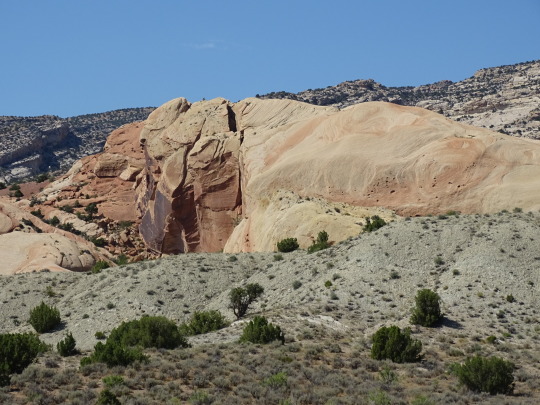
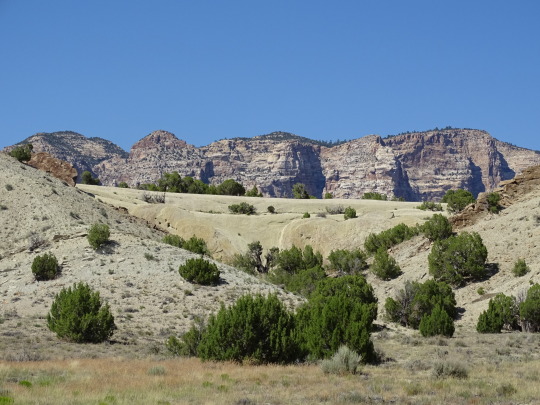
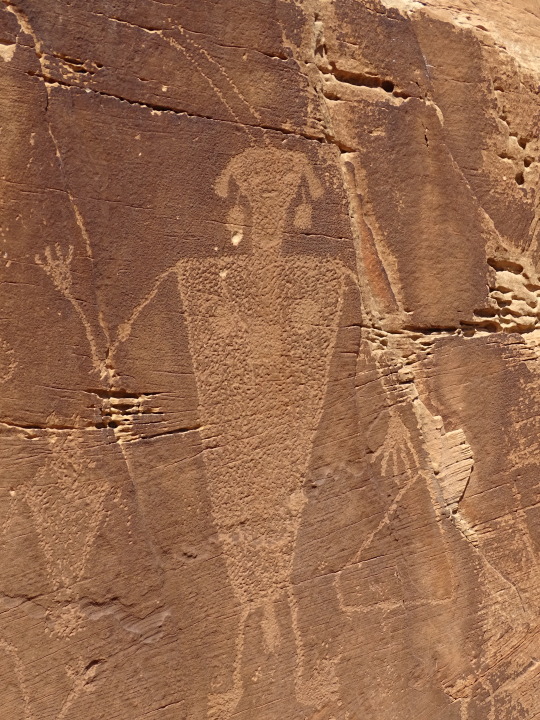
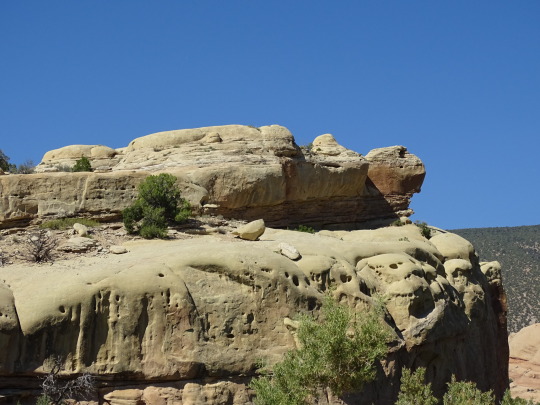
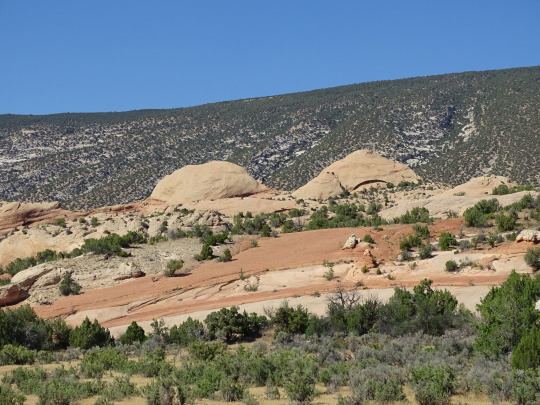

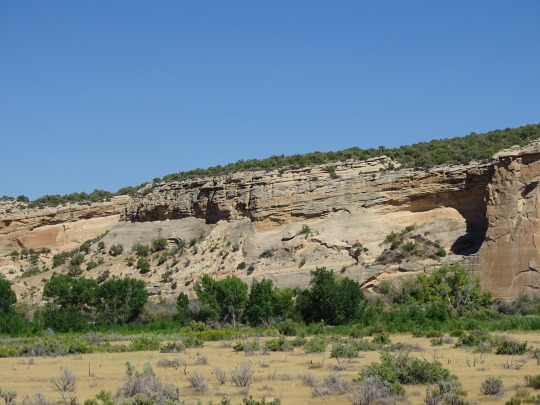
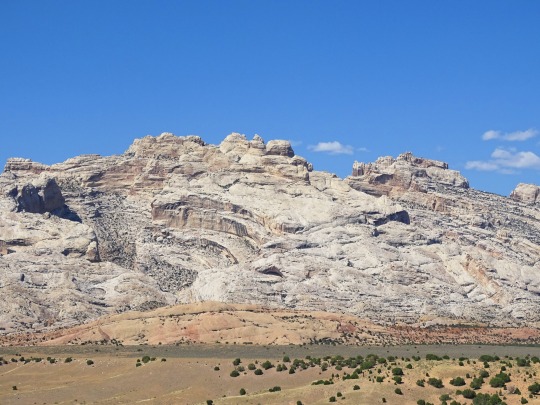

The Dinosaur National Monument was declared a national monument on October 4, 1915.
#Dinosaur National Monument#national monument#4 October 1915#travel#anniversary#US history#original photography#summer 2022#vacation#Uintah County#Utah#landscape#countryside#tourist attraction#landmark#Morrison Formation#Green River#petroglyphs#Native American history#Turtle Rock#geology#bush#flora
4 notes
·
View notes
Text
Today the Church remembers the 108 Blessed Polish Martyrs.
Orate pro nobis.
The 108 Blessed Polish Martyrs were Roman Catholic Christians in Poland killed during World War II by the Nazis, either in the concentration camps or by mass slaughter on the streets. The group comprises 3 bishops, 79 priests, 7 male religious, 8 female religious, and 11 lay people. There are two parishes named for the 108 Martyrs of World War II in Powiercie in Koło County, and in Malbork, Poland.
The 108 Blessed Martyrs were beatified on 13 June 1999 by Pope John Paul II in Warsaw, Poland.
List of Martyrs
Bishops
1. Antoni Julian Nowowiejski (1858–1941 KL Soldau), bishop
2. Leon Wetmański (1886–1941 KL Soldau), bishop
3. Władysław Goral (1898–1945 KL Sachsenhausen), bishop
Priests
1. Adam Bargielski, priest from Myszyniec (1903–1942 KZ Dachau)
2. Aleksy Sobaszek, priest (1895–1942 KL Dachau)
3. Alfons Maria Mazurek, Carmelite friar, prior, priest (1891–1944, shot by the Gestapo)
4. Alojzy Liguda, Society of the Divine Word, priest (1898–1942 KL Dachau)
5. Anastazy Jakub Pankiewicz, Franciscan friar, priest (1882–1942 KL Dachau)
6. Anicet Kopliński, Capuchin friar, priest in Warsaw (1875–1941)
7. Antoni Beszta-Borowski, priest, dean of Bielsk Podlaski (1880–1943, shot near Bielsk Podlaski)
8. Antoni Leszczewicz, Marian Father, priest (1890–1943, burnt to death in Rosica, Belarus)
9. Antoni Rewera, priest, dean of the Cathedral Chapter in Sandomierz (1869–1942 KL Dachau)
10. Antoni Świadek, priest from Bydgoszcz (1909–1945 KL Dachau)
11. Antoni Zawistowski, priest (1882–1942 KL Dachau)
12. Bolesław Strzelecki, priest (1896–1941 KL Auschwitz)
13. Bronisław Komorowski, priest (1889–22 March 1940 KL Stutthof)
14. Dominik Jędrzejewski, priest (1886–1942 KL Dachau)
15. Edward Detkens, priest (1885–1942 KL Dachau)
16. Edward Grzymała, priest (1906–1942 KL Dachau)
17. Emil Szramek, priest (1887–1942 KL Dachau)
18. Fidelis Chojnacki, Capuchin friar, priest (1906–1942, KL Dachau)
19. Florian Stępniak, Capuchin friar, priest (1912–1942 KL Dachau)
20. Franciszek Dachtera, priest (1910–23 August 1942 KL Dachau)
21. Franciszek Drzewiecki, Orionine Father, priest (1908–1942 KL Dachau); from Zduny, he was condemned to heavy work in the plantation of Dachau. While he was bending over tilling the soil, he adored the consecrated hosts kept in a small box in front of him. While he was going to the gas chamber, he encouraged his companions, saying "We offer our life for God, for the Church and for our Country".
22. Franciszek Rogaczewski, priest from Gdańsk (1892–1940, shot in Stutthof or in Piaśnica, Pomerania)
23. Franciszek Rosłaniec, priest (1889–1942 KL Dachau)
24. Henryk Hlebowicz, priest (1904–1941, shot at Borisov in Belarus)
25. Henryk Kaczorowski, priest from Włocławek (1888–1942)
26. Henryk Krzysztofik, religious priest (1908–1942 KL Dachau)
27. Hilary Paweł Januszewski, religious priest (1907–1945 KL Dachau)
28. Jan Antonin Bajewski, Conventual Franciscan friar, priest (1915–1941 KL Auschwitz); of Niepokalanow. These were the closest collaborators of St Maximilian Kolbe in the fight for God's cause and together suffered and helped each other spiritually in their offering their lives at Auschwitz
29. Jan Franciszek Czartoryski, Dominican friar, priest (1897–1944)
30. Jan Nepomucen Chrzan, priest (1885–1942 KL Dachau)
31. Jerzy Kaszyra, Marian Father, priest (1910–1943, burnt to death in Rosica, Belarus)
32. Józef Achilles Puchała, Franciscan friar, priest (1911–1943, killed near Iwieniec, Belarus)
33. Józef Cebula, Missionary Oblate, priest (23 March 1902 – 9 May 1941 KL Mauthausen)[
34. Józef Czempiel, priest (1883–1942 KL Mauthausen)
35. Józef Innocenty Guz, Franciscan friar, priest (1890–1940 KL Sachsenhausen)
36. Józef Jankowski, Pallotine, priest (1910 born in Czyczkowy near Brusy, Kashubia (died 16 October 1941 in KL Auschwitz beaten by a kapo)
37. Józef Kowalski, Salesian, priest (1911–1942) , priest beaten to death on 3 July 1942 in the KL Auschwitz concentration camp
38. Józef Kurzawa, priest (1910–1940)
39. Józef Kut, priest (1905–1942 KL Dachau)
40. Józef Pawłowski, priest (1890–9 January 1942 KL Dachau)
41. Józef Stanek, Pallottine, priest (1916–23 September 1944, murdered in Warsaw)
42. Józef Straszewski, priest (1885–1942 KL Dachau)
43. Karol Herman Stępień, Franciscan friar, priest (1910–1943, killed near Iwieniec, Belarus)
44. Kazimierz Gostyński, priest (1884–1942 KL Dachau)
45. Kazimierz Grelewski, priest (1907–1942 KL Dachau)
46. Kazimierz Sykulski, priest (1882–1942 KL Auschwitz)
47. Krystyn Gondek, Franciscan friar, priest (1909–1942 KL Dachau)
48. Leon Nowakowski, priest (1913–1939)
49. Ludwik Mzyk, Society of the Divine Word, priest (1905–1940)
50. Ludwik Pius Bartosik, Conventual Franciscan friar, priest (1909–1941 KL Auschwitz); of Niepokalanow. These were the closest collaborators of St Maximilian Kolbe in the fight for God's cause and together suffered and helped each other spiritually in their offering their lives at Auschwitz
51. Ludwik Roch Gietyngier, priest from Częstochowa (1904–1941 KL Dachau)
52. Maksymilian Binkiewicz, priest (1913–24 July 1942, beaten, died in KL Dachau)
53. Marian Gorecki, priest (1903–22 March 1940 KL Stutthof)
54. Marian Konopiński, Capuchin friar, priest (1907–1 January 1943 KL Dachau)
55. Marian Skrzypczak, priest (1909–1939 shot in Plonkowo)
56. Michał Oziębłowski, priest (1900–1942 KL Dachau)
57. Michał Piaszczyński, priest (1885–1940 KL Sachsenhausen)
58. Michał Woźniak, priest (1875–1942 KL Dachau)
59. Mieczysław Bohatkiewicz, priest (1904–4 March 1942, shot in Berezwecz)
60. Narcyz Putz, priest (1877–1942 KL Dachau)
61. Narcyz Turchan, priest (1879–1942 KL Dachau)
62. Piotr Edward Dankowski, priest (1908–3 April 1942 KL Auschwitz)
63. Roman Archutowski, priest (1882–1943 KL Majdanek)
64. Roman Sitko, priest (1880–1942 KL Auschwitz)
65. Stanisław Kubista, Society of the Divine Word, priest (1898–1940 KL Sachsenhausen)
66. Stanisław Kubski, priest (1876–1942, prisoner in KL Dachau, killed in Hartheim near Linz)
67. Stanisław Mysakowski, priest (1896–1942 KL Dachau)
68. Stanisław Pyrtek, priest (1913–4 March 1942, shot in Berezwecz)
69. Stefan Grelewski, priest (1899–1941 KL Dachau)
70. Wincenty Matuszewski, priest (1869–1940)
71. Władysław Błądziński, Michaelite, priest (1908–1944, KL Gross-Rosen)
72. Władysław Demski, priest (1884–28 May 1940, KL Sachsenhausen)
73. Władysław Maćkowiak, priest (1910–4 March 1942 shot in Berezwecz)
74. Władysław Mączkowski, priest (1911–20 August 1942 KL Dachau)
75. Władysław Miegoń, priest, commander lieutenant (1892–1942 KL Dachau)
76. Włodzimierz Laskowski, priest (1886–1940 KL Gusen)
77. Wojciech Nierychlewski, religious, priest (1903–1942, KL Auschwitz)
78. Zygmunt Pisarski, priest (1902–1943)
79. Zygmunt Sajna, priest (1897–1940, shot at Palmiry, near Warsaw)
Religious brothers
1. Brunon Zembol, friar (1905–1942 KL Dachau)
2. Grzegorz Bolesław Frąckowiak, Society of the Divine Word friar (1911–1943, guillotined in Dresden)
3. Józef Zapłata, friar (1904–1945 KL Dachau)
4. Marcin Oprządek, friar (1884–1942 KL Dachau)
5. Piotr Bonifacy Żukowski, friar (1913–1942 KL Auschwitz)
6. Stanisław Tymoteusz Trojanowski, friar (1908–1942 KL Auschwitz)
7. Symforian Ducki, friar (1888–1942 KL Auschwitz)
Nuns and religious sisters
1. Alicja Maria Jadwiga Kotowska, sister, based on eye-witness reports comforted and huddled with Jewish children before she and the children were executed (1899–1939, executed at Piaśnica, Pomerania)
2. Ewa Noiszewska, sister (1885–1942, executed at Góra Pietrelewicka near Slonim, Belarus)
3. Julia Rodzińska, Dominican sister (1899–20 February 1945, KL Stutthof); she died having contracted typhoid serving the Jewish women prisoners in a hut for which she had volunteered.
4. Katarzyna Celestyna Faron (1913–1944, KL Auschwitz); (1913–1944), had offered her life for the conversion of an Old Catholic bishop Władysław Faron (no relation). She was arrested by the Gestapo and condemned to Auschwitz camp. She put up heroically with all the abuses of the camp and died on Easter Sunday 1944. The bishop later returned to the Catholic Church).
5. Maria Antonina Kratochwil, SSND nun (1881–1942) died as a result of the torture she endured while imprisoned in Stanisławów.
6. Maria Klemensa Staszewska (1890–1943 KL Auschwitz)
7. Marta Wołowska (1879–1942, executed at Góra Pietrelewicka near Slonim, Belarus)
8. Mieczysława Kowalska, sister (1902–1941, Soldau concentration camp in Działdowo)
Roman Catholic laity
1. Bronisław Kostkowski, alumnus (1915–1942 KL Dachau)
2. Czesław Jóźwiak (1919–1942, guillotined in a prison in Dresden)
3. Edward Kaźmierski (1919–1942, guillotined in a prison in Dresden)
4. Edward Klinik (1919–1942, guillotined in a prison in Dresden)
5. Franciszek Kęsy (1920–1942, guillotined in a prison in Dresden)
6. Franciszek Stryjas (1882–31 July 1944, Kalisz prison)
7. Jarogniew Wojciechowski (1922–1942, guillotined in a prison in Dresden)
8. Marianna Biernacka (1888–13 July 1943), executed instead of her pregnant daughter-in-law Anna, offered her life for her and her unborn grandchild)
9. Natalia Tułasiewicz (1906–31 March 1945, died in KL Ravensbrück)
10. Stanisław Starowieyski (1895–1941 in KL Dachau)
11. Tadeusz Dulny, alumnus (1914–1942 KL Dachau)
Almighty God, by whose grace and power your Holy Martyrs of Poland triumphed over suffering and were faithful even to death: Grant us, who now remember them in thanksgiving, to be so faithful in our witness to you in this world, that we may receive with them the crown of life; through Jesus Christ our Lord, who lives and reigns with you and the Holy Spirit, one God, forever and ever. Amen.
(Fr. Józef Kowalski, priest beaten to death on 3 July 1942 in the KL Auschwitz concentration camp)
(Sr. Alicja Jadwiga Kotowska, a nun killed protecting a group of Jewish children in 1939 in the mass murders in Piaśnica)

#father troy beecham#christianity#jesus#saints#god#salvation#peace#martyrs#faith#christian persecution
39 notes
·
View notes
Text
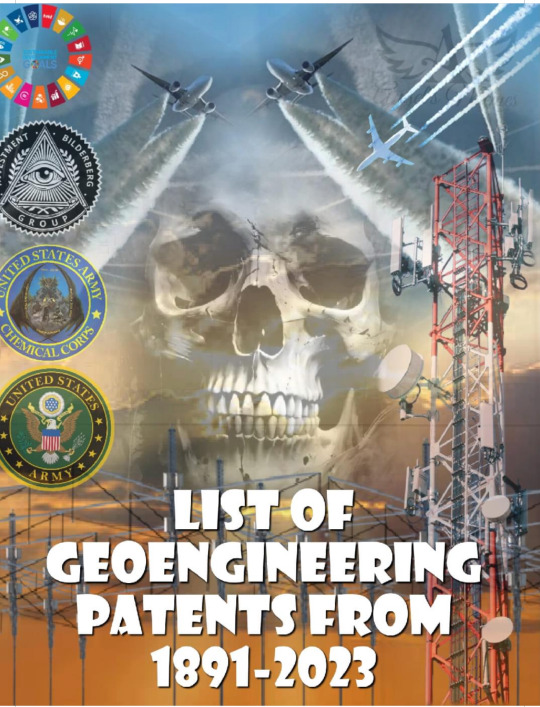
United States Patent and Trademark Office
0462795 – July 16, 1891 – Method Of Producing Rain-Fall
803180 – October 31, 1905 – Means for Producing High Potential Electrical Discharges
1103490 – August 6, 1913 – Rain-Maker
1225521 – September 4, 1915 – Protecting From Poisonous Gas In Warfare
1279823 – September 24, 1918 – Process and Apparatus for Causing Precipitation by Coalescence of Aqueous Particles Contained in the Atmosphere
1284982 – November 19, 1918 – Process and Apparatus for Procuring and Stimulating Rainfall
1338343 – April 27, 1920 – Process And Apparatus For The Production of Intense Artificial Clouds, Fogs, or Mists
1358084 – November 9, 1920 – Method of Producing Fog-Screens
1619183 – March 1, 1927 – Process of Producing Smoke Clouds From Moving Aircraft
1665267 – April 10, 1928 – Process of Producing Artificial Fogs
1892132 – December 27, 1932 – Atomizing Attachment For Airplane Engine Exhausts
1895765 – January 31, 1933 – Artificial Production of Fog
1928963 – October 3, 1933 – Electrical System And Method
1957075 – May 1, 1934 – Airplane Spray Equipment
1993316 – March 5, 1935 – Apparatus for and Method of Producing Oil Fog
2052626 – September 1, 1936 – Method of Dispelling Fog
2097581 – November 2, 1937 – Electric Stream Generator – Referenced in 3990987
2173756 – September 19, 1939 – Process of Producing Fog or Mist by Partial and Flameless Combustion
2352677 – July 4, 1944 – Artificial Fog Production
2476171 – July 18, 1945 – Smoke Screen Generator
2409201 – October 15, 1946 – Smoke Producing Mixture
2480967 – September 6, 1949 – Aerial Discharge Device
2527230 – October 24, 1950 – Method of Crystal Formation and Precipitation
2527231 – October 24, 1950 – Method of Generating Silver Iodide Smoke
2550324 – April 24, 1951 – Process For Controlling Weather
2582678 – June 15, 1952 – Material Disseminating Apparatus For Airplanes
2611992 – September 30, 1952 – Engine Exhaust Operated Fluent Material Distributor
2614083 – October 14, 1952 – Metal Chloride Screening Smoke Mixture
2633455 – March 31, 1953 – Smoke Generator
2688069 – August 31, 1954 – Steam Generator – Referenced in 3990987
2721495 – October 25, 1955 – Method And Apparatus For Detecting Minute Crystal Forming Particles Suspended in a Gaseous Atmosphere
2730402 – January 10, 1956 – Controllable Dispersal Device
2903188 – April 2, 1956 – Control of Tropical Cyclone Formation
2756097 – July 24, 1956 – Process for Weather Control
2801322 – July 30, 1957 – Decomposition Chamber for Monopropellant Fuel – Referenced in 3990987
2835530 – May 20, 1958 – Process for the Condensation of Atmospheric Humidity and Dissolution of Fog
2871344 – January 27, 1959 – Long Distance Communication System
2881335 – April 7, 1959 – Generation of Electrical Fields
2908442 – October 13, 1959 – Method For Dispersing Natural Atmospheric Fogs And Clouds
2962450 – November 29, 1960 – Fog Dispelling Composition
2963975 – December 13, 1960 – Cloud Seeding Carbon Dioxide Bullet
3019989 – February 6, 1962 – Atmospheric Space Charge Modification
2986360 – May 30, 1962 – Aerial Insecticide Dusting Device
3046168 – July 24, 1962 – Chemically Produced Colored Smokes
3056556 – October 2, 1962 – Method of Artificially Influencing the Weather
3126155 – March 24, 1964 – Silver Iodide Cloud Seeding Generator
3127107 – March 31, 1964 – Generation of Ice-Nucleating Crystals
3131131 – April 28, 1964 – Electrostatic Mixing in Microbial Conversions
3140207 – July 7, 1964 – Pyrotechnic Composition
3174150 – March 16, 1965 – Self-Focusing Antenna System
3234357 – February 8, 1966 – Electrically Heated Smoke Producing Device
3274035 – September 20, 1966 – Metallic Composition For Production of Hydroscopic Smoke
3284005 – November 8,1966 – Weather Control by Artificial Means
3300721 – January 24, 1967 – Means For Communication Through a Layer of Ionized Gases
3313487 – April 11, 1967 – Cloud Seeding Apparatus
3338476 – August 29, 1967 – Heating Device For Use With Aerosol Containers
3375148 – March 26, 1968 – Pyrotechnics Comprising Silver Iodate, Ammonium Nitrate, Nitrocellulose and Nitrate Esters
3378201 – April 16, 1968 – Method for Precipitating Atmospheric Water Masses
3410489 – November 12, 1968 – Automatically Adjustable Airfoil Spray System With Pump
3418184 – December 24, 1968 – Smoke Producing Propellant
3429507 – February 25, 1969 – Rainmaker
3432208 – November 7, 1967 – Fluidized Particle Dispenser
3441214 – April 29, 1969 – Method And Apparatus For Seeding Clouds
3445844 – May 20, 1969 – Trapped Electromagnetic Radiation Communications System
3456880 – July 22, 1969 – Method Of Producing Precipitation From The Atmosphere
3518670 – June 30, 1970 – Artificial Ion Cloud
3517512 – June 30, 1970 – Apparatus for Suppressing Contrails
3534906 – October 20, 1970 – Control of Atmospheric Particles
3545677 – December 8, 1970 – Method of Cloud Seeding
3564253 – February 16, 1971 – System And Method For Irradiation Of Planet Surface Areas
3587966 – June 28, 1971 – Freezing Nucleation
3595477 – July 27, 1971 – Fog Dispersing Method and Compositions
3601312 – August 24, 1971 – Methods of Increasing The Likelihood oF Precipitation By The Artificial Introduction Of Sea Water Vapor Into The Atmosphere Winward Of An Air Lift Region
3608810 – September 28, 1971 – Methods of Treating Atmospheric Conditions
3608820– September 20, 1971 – Treatment of Atmospheric Conditions by Intermittent Dispensing of Materials Therein
3613992 – October 19, 1971 – Weather Modification Method
3630950 – December 28, 1971 – Combustible Compositions For Generating Aerosols, Particularly Suitable For Cloud Modification And Weather Control And Aerosolization Process
USRE29142 – May 22, 1973 – Combustible compositions for generating aerosols, particularly suitable for cloud modification and weather control and aerosolization process
3659785 – December 8, 1971 – Weather Modification Utilizing Microencapsulated Material
3666176 – March 3, 1972 – Solar Temperature Inversion Device
3677840 – July 18, 1972 – Pyrotechnics Comprising Oxide of Silver For Weather Modification Use
3690552 – September 12, 1972 – Fog Dispersal
3722183 – March 27, 1973 – Device For Clearing Impurities From The Atmosphere
3748278 – July 24, 1973 – Process and Agents Having an Influence on the Weather
3751913 – August 14, 1973 – Barium Release System
3769107 – October 30, 1973 – Pyrotechnic Composition For Generating Lead Based Smoke
3784099 – January 8, 1974 – Air Pollution Control Method
3785557 – January 15, 1974 – Cloud Seeding System
3788543 – January 29, 1974 – Uniform Size Particle Generator
3795626 – March 5, 1974 – Weather Modification Process
3802971 – April 9, 1974 – Pyrotechnic Formulations for Weather Modification Comprising a Mixture of Iodates
3808595 – April 30, 1974 – Chaff Dispensing System
3813875 – June 4, 1974 – Rocket Having Barium Release System to Create Ion Clouds In The Upper Atmosphere
3835059 – September 10, 1974 – Methods of Generating Ice Nuclei Smoke Particles For Weather Modification And Apparatus Therefore
3835293 – September 10, 1974 – Electrical Heating Apparatus For Generating Super Heated Vapors
3858805 – January 7, 1975 – Ice Nucleation by Micas
3877642 – April 15, 1975 – Freezing Nucleant
3882393 – May 6, 1975 – Communications System Utilizing Modulation of The Characteristic Polarization of The Ionosphere
3887580 – June 3, 1975 – Method of Crystallization of Water in Supercooled Clouds and Fogs and Reagent Useful in Said Method
3896993 – July 29, 1975 – Process For Local Modification of Fog And Clouds For Triggering Their Precipitation And For Hindering The Development of Hail Producing Clouds
3899129 – August 12, 1975 – Apparatus for generating ice nuclei smoke particles for weather modification
3899144 – August 12, 1975 – Powder contrail generation
3915379 – October 28, 1975 – Method of Controlling Weather
3940059 – February 24, 1976 – Method For Fog Dispersion
3940060 – February 24, 1976 – Vortex Ring Generator
3990987 – November 9, 1976 – Smoke generator
3992628 – November 16, 1976 – Countermeasure system for laser radiation
3994437 – November 30, 1976 – Broadcast dissemination of trace quantities of biologically active chemicals
4042196 – August 16, 1977 – Method and apparatus for triggering a substantial change in earth characteristics and measuring earth changes
RE29,142 – February 22, 1977 – Combustible compositions for generating aerosols, particularly suitable for cloud modification and weather control and aerosolization process
4009828 – March 1 1977 – Organic Nucleating Agent for both Warm and Cold Clouds
4035726 – July 12, 1977 – Method of controlling and/or improving high-latitude and other communications or radio wave surveillance systems by partial control of radio wave et al
4096005 – June 20, 1978 – Pyrotechnic Cloud Seeding Composition
4129252 – December 12, 1978 – Method and apparatus for production of seeding materials
4141274 – February 27, 1979 – Weather modification automatic cartridge dispenser
4167008 – September 4, 1979 – Fluid bed chaff dispenser
4347284 – August 31, 1982 – White cover sheet material capable of reflecting ultraviolet rays
4362271 – December 7, 1982 – Procedure for the artificial modification of atmospheric precipitation as well as compounds with a dimethyl sulfoxide base for use in carrying out said procedure
4373391 – February 15, 1983 – Relative Humidity Sensitive Material
4396152 – August 2, 1983 – Aerosol Dispenser System
4402480 – September 6, 1983 – Atmosphere modification satellite
4412654 – November 1, 1983 – Laminar microjet atomizer and method of aerial spraying of liquids
4415265 – November 15, 1983 – Method and apparatus for aerosol particle absorption spectroscopy
4470544 – September 11, 1984 – Method of and Means for weather modification
4475927 – October 9, 1984 – Bipolar Fog Abatement System
4600147 – July 15, 1986 – Liquid propane generator for cloud seeding apparatus
4633714 – January 6, 1987 – Aerosol particle charge and size analyzer
4643355 – February 17, 1987 – Method and apparatus for modification of climatic conditions
4653690 – March 31, 1987 – Method of producing cumulus clouds
4684063 – August 4, 1987 – Particulates generation and removal
4686605 – August 11, 1987 – HAARP Patent / EASTLUND PATENT – Method and apparatus for altering a region in the earth’s atmosphere, ionosphere, and/or magnetosphere
4704942 – November 10, 1987 – Charged Aerosol
4712155 – December 8, 1987 – Method and apparatus for creating an artificial electron cyclotron heating region of plasma
4742958 – May 10, 1988 – Method for Making Artificial Snow
4744919 – May 17, 1988 – Method of dispersing particulate aerosol tracer
4766725 – August 30, 1988 – Method of suppressing formation of contrails and solution therefor
4829838 – May 16, 1989 – Method and apparatus for the measurement of the size of particles entrained in a gas
4836086 – June 6, 1989 – Apparatus and method for the mixing and diffusion of warm and cold air for dissolving fog
4873928 – October 17, 1989 – Nuclear-sized explosions without radiation
4948257 – August 14, 1990 – Laser optical measuring device and method for stabilizing fringe pattern spacing
1338343– August 14, 1990 – Process and Apparatus for the production of intense artificial Fog
4999637 – March 12, 1991 – Creation of artificial ionization clouds above the earth
5003186 – March 26, 1991 – Stratospheric Welsbach seeding for reduction of global warming
5005355 – April 9, 1991 – Method of suppressing formation of contrails and solution therefor
5038664 – August 13, 1991 – Method for producing a shell of relativistic particles at an altitude above the earths surface
5041760 – August 20, 1991 – Method and apparatus for generating and utilizing a compound plasma configuration
5041834 – August 20, 1991 – Artificial ionospheric mirror composed of a plasma layer which can be tilted
5056357 – October 15, 1991- Acoustic method for measuring properties of a mobile medium
5059909 – October 22, 1991 – Determination of particle size and electrical charge
5104069 – April 14, 1992 – Apparatus and method for ejecting matter from an aircraft
5110502 – May 5, 1992 – Method of suppressing formation of contrails and solution therefor
5156802 – October 20, 1992 – Inspection of fuel particles with acoustics
5174498 – December 29, 1992 – Cloud Seeding
5148173 – September 15, 1992 – Millimeter wave screening cloud and method
5242820 – September 7, 1993 – Army Mycoplasma Patent Patent
5245290 – September 14, 1993 – Device for determining the size and charge of colloidal particles by measuring electroacoustic effect
5286979 – February 15, 1994 – Process for absorbing ultraviolet radiation using dispersed melanin
5296910 – March 22, 1994 – Method and apparatus for particle analysis
5327222 – July 5, 1994 – Displacement information detecting apparatus
5357865 – October 25, 1994 – Method of cloud seeding
5360162 – November 1, 1994 – Method and composition for precipitation of atmospheric water
5383024 – January 17, 1995 – Optical wet steam monitor
5425413 – June 20, 1995 – Method to hinder the formation and to break-up overhead atmospheric inversions, enhance ground level air circulation and improve urban air quality
5434667 – July 18, 1995 – Characterization of particles by modulated dynamic light scattering
5436039 – July 25, 1995 – Artificial Snow in an Aggregate Form of Snow Granules
5441200 – August 15, 1995 – Tropical cyclone disruption
5492274 – February 20, 1996 – Method of and Means for Weather Modification
5546183 – August, 13, 1996 – LIDAR Droplet Size Monitor for In-Flight Measurement of Aircraft Engine Exhaust Contrails, Droplets and Aerosols
5556029 – September 17, 1996 – Method of hydrometeor dissipation (clouds)
5628455 – May 13, 1997 – Method and apparatus for modification of supercooled fog
5631414 – May 20, 1997 – Method and device for remote diagnostics of ocean-atmosphere system state
5639441 – June 17, 1997 – Methods for fine particle formation
5762298 – June 9, 1998 – Use of artificial satellites in earth orbits adaptively to modify the effect that solar radiation would otherwise have on earth’s weather
5800481 – September 1, 1998 – Thermal excitation of sensory resonances
5912396 – June 15, 1999 – System and method for remediation of selected atmospheric conditions
5922976 – July 13, 1999 – Method of measuring aerosol particles using automated mobility-classified aerosol detector
5949001 – September 7, 1999 – Method for aerodynamic particle size analysis
5984239 – November 16, 1999 – Weather modification by artificial satellites
6025402 – February 15, 2000 – Chemical composition for effectuating a reduction of visibility obscuration, and a detoxifixation of fumes and chemical fogs in spaces of fire origin
6030506 – February 29, 2000 – Preparation of independently generated highly reactive chemical species
6034073 – March 7, 2000 – Solvent detergent emulsions having antiviral activity
6045089 – April 4, 2000 – Solar-powered airplane
6056203 – May 2, 2000 – Method and apparatus for modifying supercooled clouds
6315213B1 – June 21, 2000 – Method of modifying weather
6110590 – August 29, 2000 – Synthetically spun silk nanofibers and a process for making the same
6263744 – July 24, 2001 – Automated mobility-classified-aerosol detector
6281972 – August 28, 2001 – Method and apparatus for measuring particle-size distribution
20030085296 – November 2, 2001 – Hurricane and tornado control device
6315213 – November 13, 2001 – Method of modifying weather
2002009338 – January 24, 2002 – Influencing Weather Patterns by way of Altering Surface or Subsurface Ocean Water Temperatures
20020008155 – January 24, 2002 – Method and System for Hurricane Control
6382526 – May 7, 2002 – Process and apparatus for the production of nanofibers
6408704 – June 25, 2002 – Aerodynamic particle size analysis method and apparatus
6412416 – July 2, 2002 – Propellant-based aerosol generation devices and method
6520425 – February 18, 2003 – Process and apparatus for the production of nanofibers
6539812 – April 1, 2003 – System for measuring the flow-rate of a gas by means of ultrasound
6553849 – April 29, 2003 – Electrodynamic particle size analyzer
6569393 – May 27, 2003 – Method And Device For Cleaning The Atmosphere
20040060994 – April 1, 2004 – Method for Influencing Atmospheric Formations
20040074980 – April 22, 2004 – Method and Device for Generating a Liquid Mist
0056705 A1 – March 17, 2005 – Weather Modification by Royal Rainmaking Technology
6890497 – May 10, 2005 – Method For Extracting And Sequestering Carbon Dioxide
2446250 – January 4, 2007 – A dust or particle-based solar shield to counteract global warming
20070056436 – March 15, 2007 – Challenger to Natural Twisters, Technology
2007033448 – March 29, 2007 – Production of Localized Artificial Rains in Polar Stratospheric Clouds, to Promote a Rain Wash in the CIO Gas, Reduce the Destruction of the Ozone Layer and a Replacement Process in situ of the Stratospheric Ozone
20070114298 – May 24, 2007 – Hurricane Abatement Method and System
20070158449 – July 12, 2007- Tropical Hurricane Control System
20070215946 – September 20, 2007 – Broadband Communications System via Reflection from Artificial Ionized Plasma Patterns in the Atmosphere
7965488 – November 9, 2007 – Methods Of Removing Aerosols From The Atmosphere
8048309 – August 28, 2008 – Seawater-Based Carbon Dioxide Disposal
20080203328 – August 28, 2008 – Outer Space Sun Screen for Reducing Global Warming
20100072297 – September 24, 2008 – Method for controlling hurricanes
7434524 – October 14, 2008 – Machine to Get Rid of Hurricanes
8012453 – October 27, 2008 – Carbon Sequestration And Production Of Hydrogen And Hydride
20090008468 – January 8, 2009 – How to Tame Hurricanes and Typhoons with Available Technology
7520237 – April 21, 2009 – Hurricane Prevention System and Method
20090255999 – October 15, 2009 – Production or Distribution of Radiative Forcing Elements
20090290761 – November 26, 2009 – Upper Troposphere and Lower Stratosphere Wind Direction, Speed, and Turbidity Monitoring using Digital Imaging and Motion Tracking
7645326 – January 12, 2010 – RFID environmental manipulation
7655193 – February 2, 2010 – Apparatus For Extracting And Sequestering Carbon Dioxide
20100074390 – March 25, 2010 – Method for Weather Modification and Vapor Generator for Weather Modification
20100127224 – May 27, 2010 – Atmospheric Injection of Reflective Aerosol for Mitigating Global Warming
7748662 – July 6, 2010 – Aerial Delivery System
20100170958 – July 8, 2010 – Hurricane Mitigation by Combined Seeding with Condensation and Freezing Nuclei
20100252648 – October 7, 2010 – Climate Processor
20100264230 – October 21, 2010 – Severe Storm / Hurricane Modification Method and Apparatus
20100282914 – November 11, 2010 – Enhanced Aerial Delivery System
20110005422 – January 13, 2011 – Method and Apparatus for Cooling a Planet
20110049257 – March 3, 2011 – Method and Apparatus for Local Modification of Atmosphere
20110101124 – May 5, 2011- Hurricane Abatement System and Method
2011073650 – June 23, 2011 – Atmospheric Delivery System
20110168797 – July 14, 2011 – Method of Weakening a Hurricane
20110174892 – July 21, 2011 – Apparatus and Related Methods for Weather Modification by Electrical Processes in the Atmosphere
20110198407 – August 18, 2011 – Method and Apparatus to Break Up or Annihilate Typhoons, Tornadoes, Cyclones or Hurricanes
20110204159 – August 25, 2011 – Weather Management Using Space-Based Power System
20110284649 – November 24, 2011 – Apparatus and Method for the Mitigation of Rotating Wind Storms
8079545 – December 20, 2011 – Ground based Manipulation and Control of Aerial Vehicle during nonflying operations
20120024971 – February 2, 2012 – Methods for Environmental Modification with Climate Control Materials and Coverings
8262314 – September 11, 2012 – Method for Decreasing the Intensity and Frequency of Tropical Storms or Hurricanes
0117003 – October 5, 2012 – Geoengineering Method Of Business Using Carbon Counterbalance Credits
20120267444 – October 25, 2012- Artificial Freezing Apparatus and Freezing Method Therefor
20120286096 – November 15, 2012 – Aerial Delivery Devices, Systems and Methods
20130008365 – January 10, 2013 – System and Method for Decreasing the Intensity and Frequency of Tropical Storms or Hurricanes
20130015260 – January 17, 2013 – Concept and Model for Utilizing High-Frequency or Radar or Microwave Producing or Emitting Devices to Produce, Effect, Create or Induce Lightning or Lightspeed or Visible to Naked Eye Electromagnetic Pulse or Pulses, Acoustic or Ultrasonic Shockwaves or Booms in the Air, Space, Enclosed, or Upon any Object or Mass, to be Used Solely or as Part of a System, Platform or Device Including Weaponry and Weather Modification
8373962 – February 12, 2013 – Charged seed cloud as a method for increasing particle collisions and for scavenging airborne biological agents and other contaminants
20130038063 – February 14, 2013 – Apparatus and Method for Inhibiting the Formation of Tropical Cyclones
201300043322 – February 21, 2013 – Processes and Apparatus for Reducing the Intensity of Tropical Cyclones
8402736 – March 26, 2013 – Method and Apparatus for Suppressing Aeroengine Contrails
8439278 – May 14, 2013 – Apparatus for Producing a Mass of Water Vapor, Apparatus for Producing, Moving, and Climbing a Mass of Water Vapor, and Method of Causing Artificial Stimulation of Rain
20130175352 – July 11, 2013 – Method to Influence the Direction of Travel of Hurricanes
20130186127 – July 25, 2013 – Ice Floater for Facilitating Ice-Freezing on Water Surface
20130206912 – August 15, 2013 – Moisture Dispersion
20140055876 – February 27, 2014 – Method for Controlling Land Surface Temperature using Stratospheric Airships and Reflector
20140131471 – May 15, 2014 – Apparatus to Channel Large Air Masses for Climate Modification
20140145002 – May 29, 2014 – System for Facilitating Cloud Formation and Cloud Precipitation
20140224894 – August 14, 2014 – Technique to Mitigate Storms using Arrays of Wind Turbines
8825241 – September 2, 2014 – Autonomous Wave-Powered substance Distribution Vessels for Fertilizing Plankton, Feeding Fish, and Sequestering Carbon from the Atmosphere
8944363 – February 3, 2015 – Production or Distribution of Radiative Forcing Agents
20150077737 – March 19 2015 – System and Methods for Monitoring an Environment
9002660 – April 7, 2015 – Device and Method for Determining and Indicating Climate-Relevant Effects of a Contrail Produced by an Airplane
20150230415 – August 20, 2015 – Methods for Decreasing Local Temperature using High Albedo Materials
20150337224 – November 26, 2015 – Microwave Acceleration of Carbon Gasification Reactions
9311539 – April 12, 2016 – Aircraft Contrail Detection
9429348 – August 30, 2016 – Method and Device for Producing Snow
9491911 – November 15, 2016 – Method for Modifying Environmental Conditions with Ring Comprised of Magnetic Material
9589473 – March 7, 2017 – Method and System for Automatically Displaying Flight Path, Seeding Path, and Weather Data
9715039 – July 25, 2017 – Apparatus and System for Smart Seeding within Cloud Formations
20170217587 – August 3, 2017 – Vehicles and Systems for Weather Modification
20170303479 – October 26, 2017 – Warm Cloud Catalyst, Preparation Method Therefor and Application Thereof
20180006422 – January 4, 2018 – Methods for Disrupting Hurricane Activity
20180006421 – January 4, 2018 – Methods for Disrupting Tornadic Activity
9924640 – March 27, 2018 – Modifying Sunlight Scatter in the Upper Atmosphere
20180217119 – August 2, 2018 – Process and Method for the Enhancement of Sequestering Atmospheric Carbon through Ocean Iron Fertilization, and Method for Calculating net Carbon Capture from said Process and Method
10189753 – January 29, 2019 – Fog-Generating Device Comprising a Reagent and Ignition Means
2019203461 – June 6, 2019 – Airships for Weather Manipulation
10314249 – June 11, 2019 – Systems and Methods of Inducing Rainfall
10375900 – August 13, 2019 – Rain Induced by Supercontinuum Laser Beams
10433408 – October 1, 2019 – Methods for Affecting Spinning Atmospheric Phenomena
10435165 – October 8, 2019 – Aircraft Electrically-Assisted Propulsion Control System
20190364748 – December 5, 2019 – Method and System for Expressing Airborne Cloud Seeding Line Considering Cloud Water
20200187430 – June 18, 2020 – Helical Artificial Generator of Tornado, Hurricane, Yellow Dust, and Typhoon
20200196539 – June 25, 2020 – Device for Seeding a Cloud Cell
10701871 – July 7, 2020 – Systems for Maintaining and/or Decreasing Water Temperature using High Albedo Materials
20200233115 – July 23, 2020 – Method and System for Determining Cloud Seeding Potential
WO2020148644A1 – July 23, 2020 – 3d Reduced Graphene Oxide/Sio 2 Composite for Ice Nucleation
20200261939 – August 20, 2020 – Apparatus for Generating and Optically Characterizing an Aerosol
2020101897 – September 9, 2020 – Artificial Rainmaking by High Power Laser Initiation Endothermic Reactions through Drone Aircraft Remote Control System
20200288650 – September 17, 2020 – Technology and Technique to Prevent, Diminish or Interfere with the Formation of Hurricanes on Earth from one or more Platforms in Space
20200288651 – September 17, 2020 – Methods for Cooling Water Temperature using High Albedo Materials
20200315104 – October 8, 2020 – Propagating Sound Through Bodies of Water, to Generate and Direct Wind, for the Purpose of Moderating and Affecting Weather Patterns
20200386970 – December 10, 2020 – Aerostatically Stabilized Atmospheric Reflector to Reduce Solar Irradiance
10888051 – January 12, 2021 – Intelligent Systems for Weather Modification Programs
20210037719 – February 11, 2021 – Planetary Weather Modification System
10941705 – March 9, 2021 – Hanson-Haber Aircraft Engine for the Production of Stratospheric Compounds and for the Creation of Atmospheric Reflectivity of Solar Radiation in the 555nm Range and to Increase Jet Engine Thrust and Fuel Economy through the Combustion of Ammonia and Ammonia By-Products
2021063943 – April 8, 2021 – Bacterial Preparations for Ice Nucleation
20210153442 – May 27, 2021 – Systems and Methods for Rain Cloud Initiation
20210163157 – June 3, 2021 – Artificial Ring, Solenoid System to Terraform
20210235638 – August 5, 2021 – Weather Management of Cyclonic Events
2021152336 – August 8, 2021 – Method of Cloud Seeding using Natural Ice Nucleating Agents
20210285851 – September 16, 2021- System for Sampling and Analyzing Contrails Generated by an Aircraft
20210289720 – September 23, 2021 – Systems and Methods for Producing Rain Clouds
2021105881 – October 21, 2021 – Process for Generating Marine Clouds and Ocean Microbubbles
20210329922 – October 28, 2021 – Compositions and Methods for Enhanced CO2 Capture and Storage
20210329852 – October 28, 2021 – Method for Preventing a Formation of, and/or for Dispersing, a Tropical Cyclone, and Arrangement Therefor
20210352856 – November 18, 2021 – Aerial Electrostatic System for Weather Modification
2021107294 – December 9, 2021 – Wind Turbines for Marine Cloud Brightening Dispersion
2022003028 – January 6, 2022 – Apparatus for Precipitation of Atmospheric Water
23220065599 – March 3, 2022 – Rocket for Artificial Rainfall using Ejection Hygroscopic Flare
11274534 – March 15, 2022 – Artificial rain to support water flooding in remote oil fields
20220113450 – April 14, 2022 – Calculation Method of Total Artificial Precipitation in Seeding Area Compared to Non-Seeding Area
2022094269 – May 5, 2022 – Reflective Hollow SRM Material and Methods
3994976 – May 11, 2022 – Apparatus for Electro-Spray Cloud Seeding
11330768 – May 17, 2022 – Systems and Methods for Producing Rain Clouds
20220268505 – August 25, 2022 – Method and Apparatus for Making Falling Snow
2022186970 – September 9, 2022 – Method of Geoengineering to Reduce Solar Radiation
20220355925 – November 10, 2022 – Aeronautical Car and Associated Features
20220357482 – November 10, 2022 – Method and System of Analyzing Ingredients of Artificial Rainfall for Verification of Cloud Seeding Effect
20230050373 – February 16, 2023 – Electromagnetic System to Modify Weather
20230075132 – March 9, 2023 – System for Moderating Energy Absorption at the Earth’s Surface with a Programmable Forcing Network of Climate Control Panels
20230117390 – April 20, 2023 – System and Method for Proactive and Reversible Mitigation of Storm/Hurricane/Typhoon/Cyclone
20230126982 – April 27, 2023 – Method for Analyzing Effect of Hygroscopic Seeding Material Sprayed on Ground Aerosol Concentration Through Airborne Cloud Seeding Experiment
20230141493 – May 11, 2023 – Device for Unmanned Aerial Vehicle to Deploy a Rainfall Catalytic Bomb
20230149876 – May 18, 2023 – Coated Chloride Salt Particles and Methods of Making and Using the Same
226 notes
·
View notes
Text
Wilfred Owen: the man not the memorial

All a poet can do today is warn.
- 2nd Lieutenant Wilfred Edward Salter Owen MC (1893-1918)
The body of Wilfred Owen’s work is generally regarded as a memorial to the atrocities of war. Often heralded as one of the finest poets of the First World War, Wilfred Owen has become a symbol to many of 1914-1918 encapsulating a sense of futility (the title one of his more famous poems), anger, and despair at the suffering endured by the soldiers during the Great War, or indeed any war before and after.
Poems like ‘Anthem for Doomed Youth’ convey the intense futility of it all, for “what passing-bells for these who die as cattle?”, whilst he evokes the disturbing psychological impact of the fighting in works like ‘Mental Cases’ where “these are the men whose minds the Dead have ravaged”. The canonisation of such works has preserved Owen as a symbol of the First World War and a reminder of its horrors.
This is not without challenge of course. Owen’s was only one voice representing one point of view and cannot be seen to capture the myriad of views and feelings of all the combatants and his generation, but at the same time that is not sufficient reason to dismiss his work as irrelevant to the study of the War.
More interesting to me is the feeling that Owen’s poetic legacy has put aside the man that was Wilfred Owen. Every schoolchild knows at least one of his poems but know very litte of his life as a man and as a soldier. It is easy to forget that he too was a flesh and blood man fighting in the trenches, with his own hopes and fears, uncertainties and complexities.

Born in 1893, Owen was teaching English to children near Bordeaux, France, when war broke out in the summer of 1914. The following year, he returned to England and enlisted in the war effort. On 21 October 1915, he enlisted in the Artists Rifles Officers' Training Corps. For the next seven months, he trained at Hare Hall Camp in Essex. On 4 June 1916 he was commissioned as a second lieutenant (on probation) in The Manchester Regiment. By January 1916 he was on the front lines in France. As he wrote in 1918, his motives for enlisting were twofold, and included his desire to write of the experience of war: “I came out in order to help these boys - directly by leading them as well as an officer can; indirectly, by watching their sufferings that I may speak of them as well as a pleader can.”
On April 1, 1917, near the town of St. Quentin, Owen led his platoon through an artillery barrage to the German trenches, only to discover when they arrived that the enemy had already withdrawn. Severely shaken and disoriented by the bombardment, Owen barely avoided being hit by an exploding shell, and returned to his base camp confused and stammering.
A doctor diagnosed shell-shock, a new term used to describe the physical and/or psychological damage suffered by soldiers in combat. Though his commanding officer was skeptical, Owen was sent to a French hospital and subsequently returned to Britain, where he was checked into the Craiglockhart War Hospital for Neurasthenic Officers in Scotland in 1917. There he was officially diagnosed as suffering from neurasthenia (‘shell-shock’).
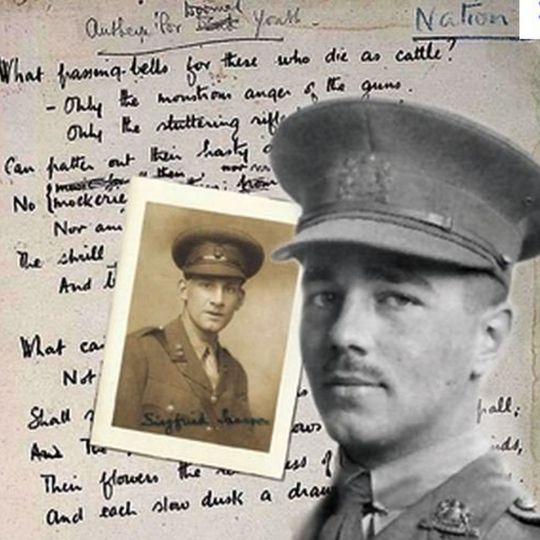
It was there he famously met Siegfried Sassoon and his poetry took on a new direction and life. Owen spent the first part of 1918 in England training and recuperating. He did a short spell working as a teacher in nearby Tynecastle High School, he returned to light regimental duties. In March 1918, he was posted to the Northern Command Depot at Ripon. A number of poems were composed in Ripon, including "Futility" and "Strange Meeting". His 25th birthday was spent quietly in Ripon Cathedral.
In recent years much work has been done to restore Owen’s humanity, most notably Dominic Hibberd’s 2002 work Wilfred Owen: A New Biography, which, whilst clearing up other details of Owen’s life, confirms that he was gay. On one level that shouldn’t matter. But interestingly facts like this could cast some of his poetry in a new light, with particular regard to the vivid and sometimes shocking sensuality and even excitement that is undoubtedly present in poems like ‘The Sentry’, where “thud! flump! thud! down the steep steps came thumping/ And splashing in the flood, deluging muck”. An idea of the attractiveness and lure of war could possibly develop from this interpretation, particularly as Owen, like his friend Siegfried Sassoon, returned to the front line after absence.

Indeed whilst Owen's work rises above that of many contemporary poets, the circumstances surrounding his death at such a young age (25), and the news of his death, has added to the powerful emotions that surround Owen. Rejecting offers by his friends to pull strings and arrange for him to sit out the rest of the war Owen chose to return to the front to help the men he felt he had left behind. Owen’s battalion was part of the spearhead used to break the final German defensive line after a series of Allied advances following success at Amiens in August 1918. On 1 October 1918, Owen led units of the Second Manchester's to storm a number of enemy strong points near the village of Joncourt. For his courage and leadership in this action, he was awarded the Military Cross.
Owen was killed in action on 4 November 1918 during the crossing of the Sambre–Oise Canal, exactly one week (almost to the hour) before the signing of the Armistice which ended the war, and was promoted to the rank of Lieutenant the day after his death. A key problem was to overcome the Sambre canal defences and gain the Eastern bank, and on 4th November at 5.45am Owen was involved in the attempt to cross. The exact details of that morning are hazy, and all that is known is that Owen was seen leading and encouraging his men in the early part of the struggle, but was killed, possibly as he crossed the water on a raft, sometime between 6 and 8.00am. Famously the telegram notifying his family of his death arrived mid-day on November 11th as the celebrations around the Armistice rang out.

These are facts known to all of us. But what I found really eye opening was going to the place where he spent his last night before his death. It puts a different perspective on Wilfred Owen, not the poet, but the man and the officer who cared deeply for his men under his command.
Owen and his platoon had spent the previous night in the cellar of a Forester’s House in the wood outside Ors. Ors is mere two hours’ drive from Calais in the Nord-Pas de Calais region. It’s a small village and if you walk across the canal you can church bells tolling. To right and left the countryside resembles a French Impressionist painting. The waterway is lined with tall, leafy Poplar trees; there are meadows full of cattle, the hills beyond roll into the distance - an idyllic scene, glowing in the spring sunlight. It’s hard to conceive of the ghastly sights, sounds and smells that once shattered this tranquil landscape.
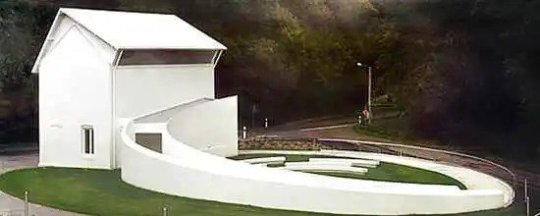
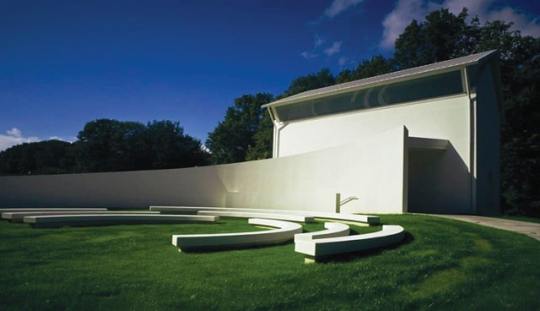
When I was driving with friends around there we visited key sites that marked the First World War. When we got to Ors we came across Forester’s House, now a memorial to Wilfred Owen. We were told by that by some villagers that a great number of British visitors came looking for Owen’s grave and the exact spot where he had been killed, and asking to visit the cellar of the Forester’s house. And so a grassroots campaign amongst locals began to raise funds to commemorate Wilfred Owen properly. British artist Simon Patterson along with French architect Jean-Christophe Denise took seven years to design a suitable memorial - by re-designing the building into a place for reflection and meditation - which eventually opened in 2011.
The tiny cellar remains bare and untouched, but the 18th century house above has been transformed into a 21st century sculptural object, its entire brick facade painted stark white to resemble bleached bone, the original roof encased and glazed to form a face-down open book. The gutted interior is now a sanctuary, lined by translucent glass panels, each etched with fragments of original text from Wilfred Owen’s best-known and much-loved works, complete with his corrections, scribbles and crossings-out. The drafts bear testament to the poet’s struggle with the barbaric absurdity of war: “My subject is War, and the pity of War.” Included are lines from Dulce et Decorum Est, Anthem for Doomed Youth, The Dead Beat, Strange Meeting, and Spring Offensive; each poem backlit by waves of coloured lights activated by the recorded voice of actor Kenneth Branagh playing inside the room. Branagh’s stirring readings pitch the poems across the open space. They rise and fall from the walls and reverberate around the roof lights, before flowing out into the l’Évêque forest beyond.
It’s an impressive memorial and a powerful place, made all the more effective by being so simple. Unlike other war museums, there are no artefacts, no tanks, no weapons or uniforms. It was created as: “a quiet place that is suitable for reflection and the contemplation of poetry,” gently glorifying the art that has come out of the chaos and tragedy of war.
It’s all the more remarkable that the local French took the initiative because Owen was pretty much unknown in France - but today his poetry has been translated into French for schoolchildren to learn and reflect upon the pity of war.

We visited the cellar and I tried to imagine what Owen’s last night was like. I could empathise from my own experience of the battlefield out in Afghanistan waiting to leave on a night time or day time mission in my helicopter. As any soldier will tell you, everyone has their own coping mechanism to deal with the pre-mission nerves and unspoken anxieties. Some hide it better than others. I tried to imagine Wilfred Owen’s state of mind.
Thankfully we can have a good idea because he wrote a letter. Billeted in the cramped, smoke-filled cellar of a forester’s house in woods near Ors in late October 1918, Owen took time to write to his mother. His mother was to receive his letter on 11 November, 1918, the day the Armistice was declared, along with a telegram informing Susan and Tom Owen that their beloved son had died in action seven days earlier. The words of that last letter home are carved now into the stone wall of a curved walkway that leads to the brick-lined cellar of the forester’s house.
Entering the cellar, you are struck by how crowded it must have been that night when 29 soldiers were holed up here, smoking like chimneys. As you begin to absorb the surrounding a recording begins of Kenneth Branagh reading Owen’s last letter to his mother. It is observant, amusing - and deeply moving. Owen’s letter was designed to reassure his mother, saying nothing about the impending attack, but instead poking fun at his comrades that he cared deeply about.
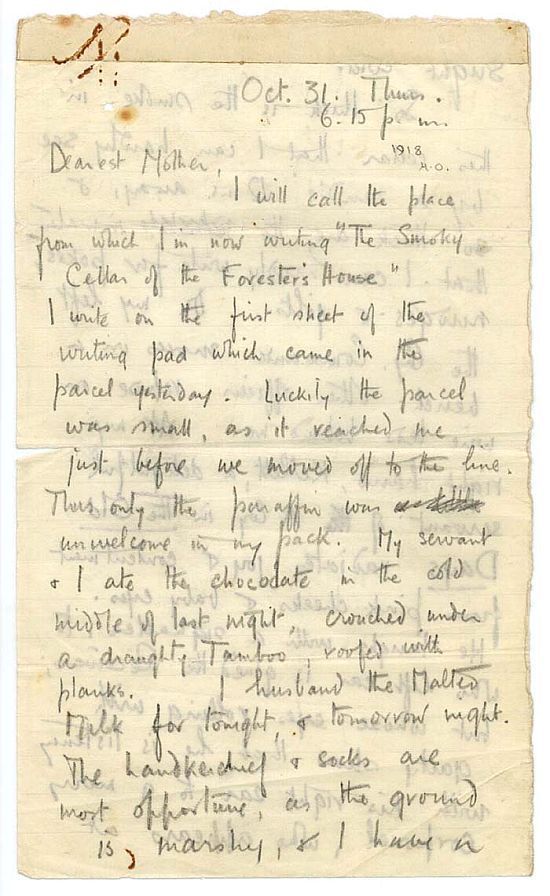
To Susan Owen
Thurs. 31 October [1918] 6:15 p.m.
[2nd Manchester Regt.]
Dearest Mother,
I will call the place from which I’m now writing ‘The Smoky Cellar of the Forester’s House’. I write on the first sheet of the writing pad which came in the parcel yesterday. Luckily the parcel was small, as it reached me just before we moved off to the line. Thus only the paraffin was unwelcome in my pack. My servant & I ate the chocolate in the cold middle of last night, crouched under a draughty Tamboo, roofed with planks. I husband the Malted Milk for tonight, & tomorrow night. The handkerchief & socks are most opportune, as the ground is marshy, & I have a slight cold!
So thick is the smoke in this cellar that I can hardly see by a candle 12 ins. away, and so thick are the inmates that I can hardly write for pokes, nudges & jolts. On my left the Company Commander snores on a bench: other officers repose on wire beds behind me. At my right hand, Kellett, a delightful servant of A Company in The Old Days radiates joy & contentment from pink cheeks and baby eyes. He laughs with a signaller, to whose left ear is glued the Receiver; but whose eyes rolling with gaiety show that he is listening with his right ear to a merry corporal, who appears at this distance away (some three feet) nothing [but] a gleam of white teeth & a wheeze of jokes.
Splashing my hand, an old soldier with a walrus moustache peels & drops potatoes into the pot. By him, Keyes, my cook, chops wood; another feeds the smoke with the damp wood.
It is a great life. I am more oblivious than alas! yourself, dear Mother, of the ghastly glimmering of the guns outside, & the hollow crashing of the shells.
There is no danger down here, or if any, it will be well over before you read these lines.
I hope you are as warm as I am; as serene in your room as I am here; and that you think of me never in bed as resignedly as I think of you always in bed. Of this I am certain you could not be visited by a band of friends half so fine as surround me here.
Ever Wilfred x

At dawn on 4th November 1918, the bodies of hundreds of soldiers littered these fields. Bludgeoned, blinded, blown to smithereens, their hopes and dreams ended in the first minutes of brutal engagement as they floundered through a blasted land, thick with mud, blood and the gory detritus of war. They lost their lives horribly in a futile attempt to claim a few extra inches on the map of Europe at a time when both sides knew the First World War was over, and to carry on fighting was a cynical, cruel waste of time and the lives of men wanting to go home alive to their loved ones.
After the action, shocked survivors found a pair of standing bodies - an English Tommy and a German Fritz - welded face-to-face in death by the impact of their bayonet charge. On that day, England lost more than its fair share of brave men. In their midst lay a poetic genius whose compassionate and skilful writing still stirs the souls and breaks the hearts of millions of readers almost a hundred years after his death. After all these years, Wilfred Owen’s bleak words: “I am the enemy you killed, my friend,” continue to carry across borders and speak to nations about the foolishness of war - its horror, grief and waste - and the terrible impact warfare still has on the world today. Second Lieutenant Wilfred Edward Salter Owen MC now lies alongside 30 of his fellow soldiers buried beneath pristine rows of crisp white headstones inside the compact War Graves Commission Cemetery at Ors.

Any doubts of Wilfred Owen’s incredible bravery arising from his mental breakdown in 1917 can be quickly dispelled by his decision to go back to France. It is this little detail that is so often overlooked that truly lends pathos to the war poetry of Wilfred Owen. This is central to Owen’s complex identity that is lost by the reductive perspective of him as this mythic anti-war herald, and not as a man of immense sacrificial courage and an unspoken sense of personal duty to others.
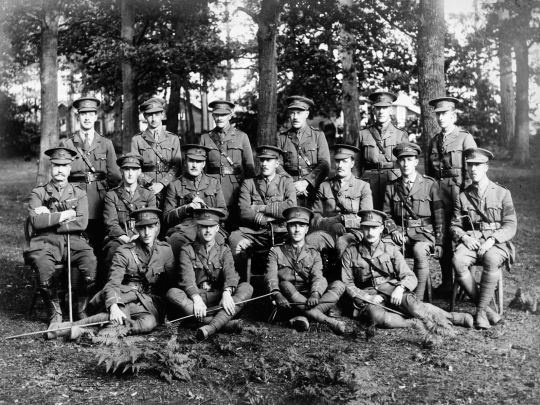
Owen is not the only poet of the war era to suffer this arguable ‘dehumanisation’. Of course it is important to recognise what these figures reveal about war and its impact, but we must not lose sight of the men behind the symbols and thereby rob them of their humanity and thus their very human sacrifice. When we remember those who have lost their lives, our thoughts must be of the men, not just the memorials.
#wilfred owen#owen#poet#poetry#first world war#war#great war#remembrance#remembrance sunday#armistice day#britain#british army#france#soldier#battle#memorial#commemoration
132 notes
·
View notes
Text
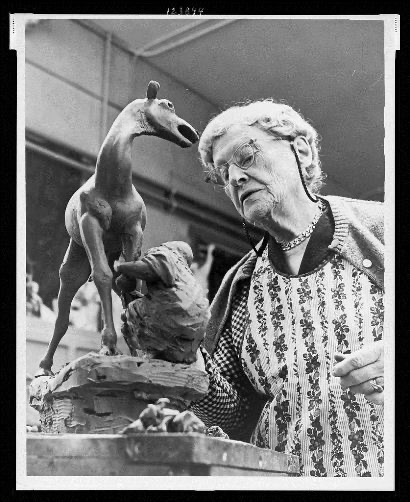
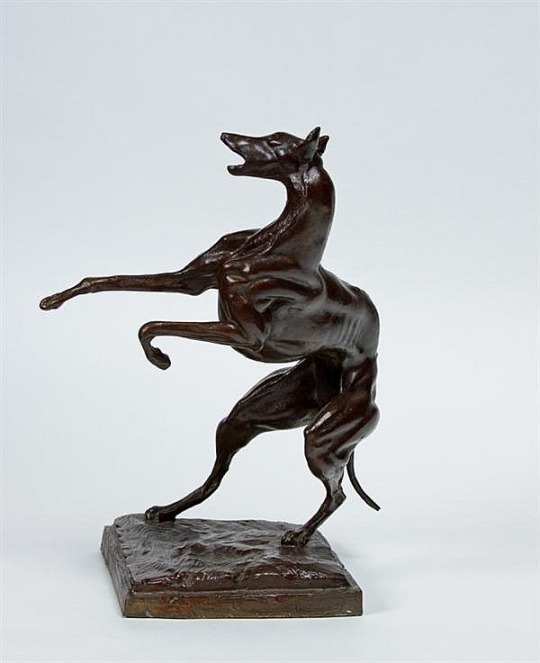
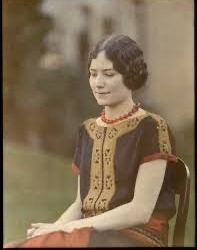

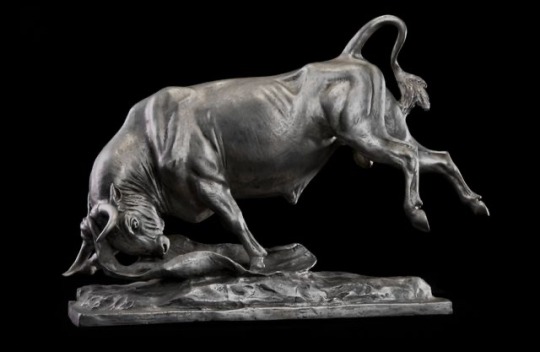
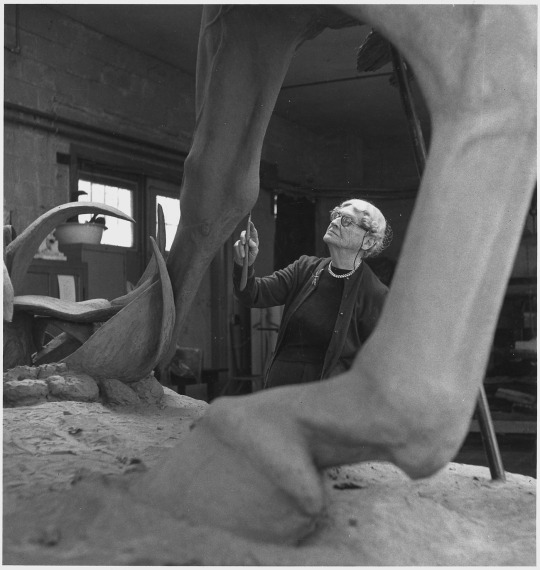
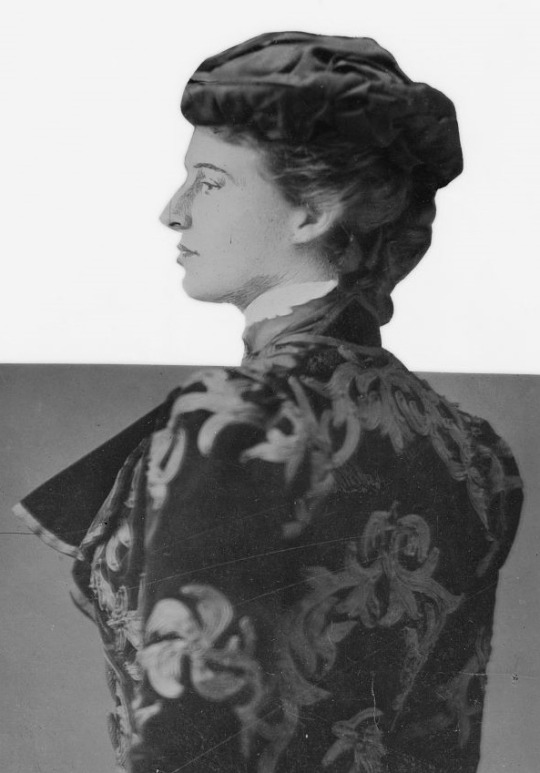
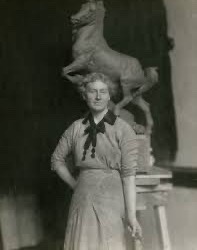

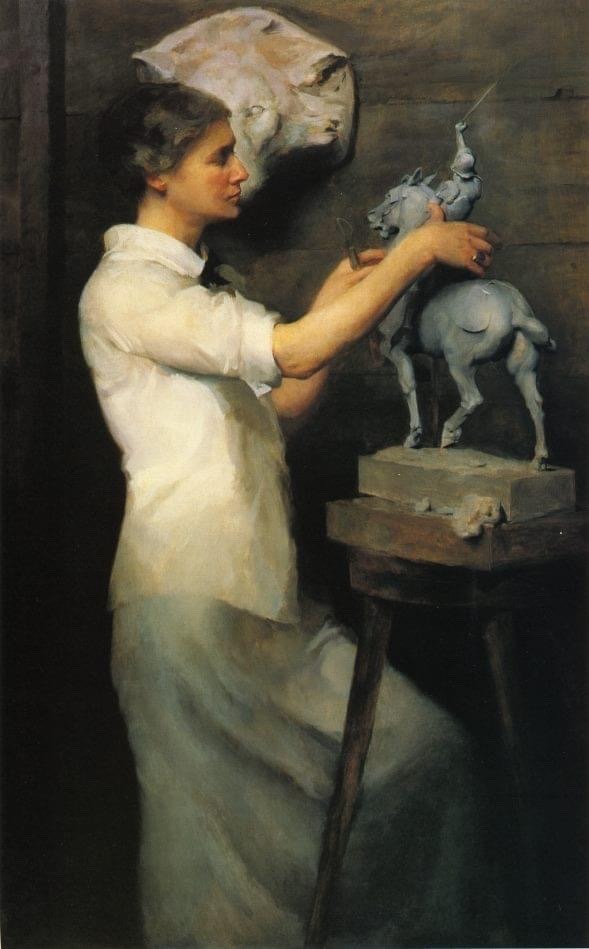
Anna Vaughn Huntington (née Hyatt; #bornonthisday March 10, 1876 – October 4, 1973) was an American sculptor who was among New York City's most prominent sculptors in the early 20th century. At a time when very few women were successful artists, she had a thriving career. Hyatt Huntington exhibited often, traveled widely, received critical acclaim at home and abroad, and won multiple awards and commissions.
10) Marion Boyd Allen (USA, 1862 - 1941)
Portrait of Anna Vaughn Hyatt, 1915
oil on canvas, 40 x 32 in.
Maier Museum of Art at Randolph College, Lynchburg, Virginia, United States of America | As first seen via Female Artists in History FB
Marion Boyd Allen (23 October 1862 – 28 December 1941) was an American painter, known for her portraits and landscapes. Both Via Wikipedia
#MarionBoydAllen #Portrait #AnnaVaughnHyatt #artherstory #artbywomen #womensart #palianshow #art #womenartists #femaleartist #artist #painter #sculptor
3 notes
·
View notes
Note
infodump about your favorite historical figures
AAAAAA YES OKAY!!! :DD
One of my favorite historical figures would have to be Wilfred Owen, a poet who fought in World War I and used his poetry to highlight to horrors of war(my favorites would have to be The Last Laugh, Dulce Et Decorum Est, and The Parable of The Old Man and the Young). He’s probably my favorite poet, and had a short but very interesting life.
Owen would enlist in the army in 1915 and sent to France, which he initially viewed as heroic and gallant, but would eventually grow disillusioned with the war and its misery.
He would be hospitalized for shell shock in 1917, and would meet fellow poet Siegfried Sassoon there, who also used his poetry to expose the horrors of war. Both of them were kind of gay for each other. A letter Owen would write to Sassoon has this banger quote:
“… I held you as my Keats + Christ + Elijah + my Colonel + my father-confessor + Amenophis IV in profile. What’s that mathematically? In effect it is this: that I love you, dispassionately, so much, so very much, dear Fellow, that the blasting little smile you wear on reading this can’t hurt me in the least.”
The two would eventually part and return to fighting, but upon their parting, Sassoon would give Owen the address to Robert Ross, an editor in London…. And one of Oscar Wilde’s *best friends*
Unfortunately, Owen would be killed in action on October 4, 1918- only a few days before the war ended.
I’ve also got a really bad Ulysses S Grant obsession……. Inexplicably. I don’t know how that happened (an APUSH project I took too seriously)
Anyway, America’s 18th president really liked horses!!! During the Mexican-American War, he rode on one sideways to avoid getting hit by bullets, like this:
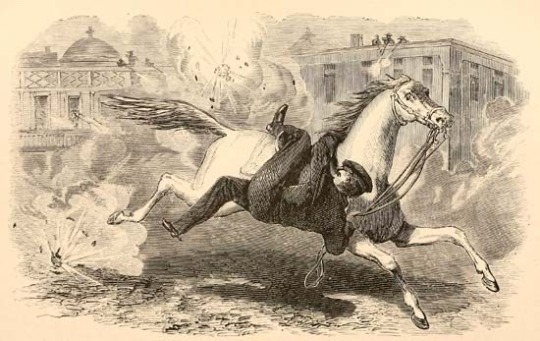
While he was at in the military academy at West Point, there was a horse named York that only he and one other person could ride, and he was the only one who could actually do it well. Ulysses S Grant was a horse girl.
He was also kind of a notoriously sloppy dresser. But he still slayed!
Anyway! Some dead people I’m obsessed with!! Thank you for asking me to talk about them, because this was really fun, and I’m so sorry if this is absolutely incoherent!!!!
19 notes
·
View notes